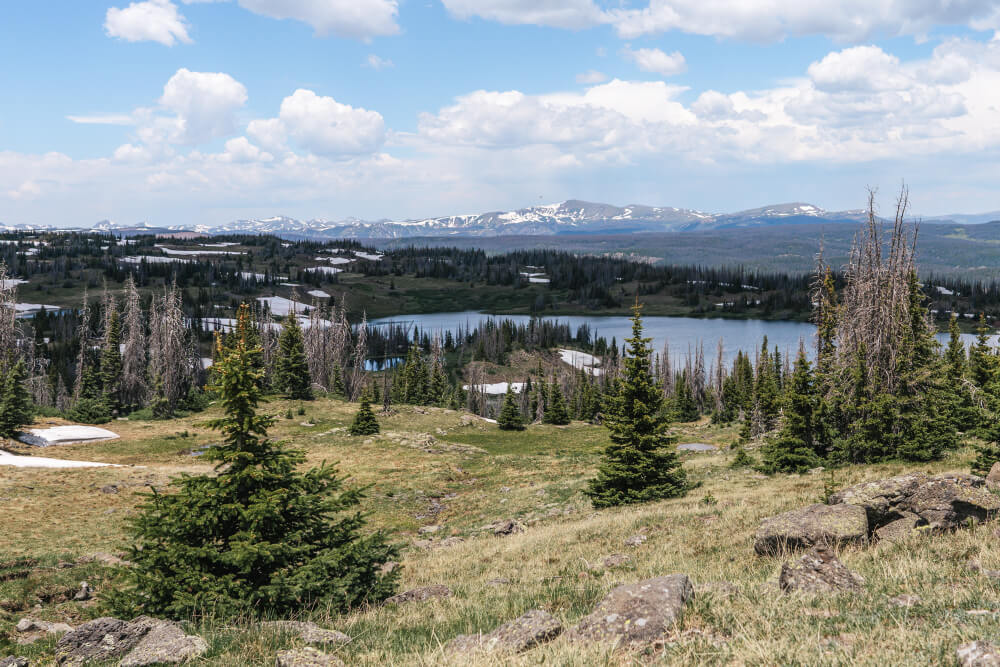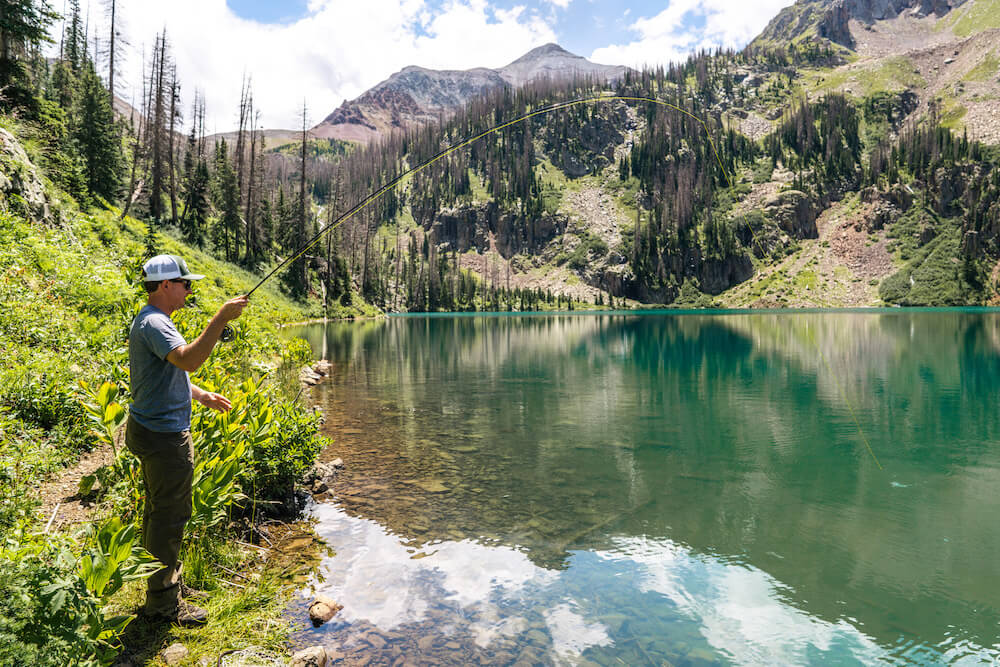The plan for this year’s annual Sierra backpacking trip was foiled by an unexpected bout of Covid, so we ended up taking a shorter, 4-day trek into a new place for us: the Emigrant Wilderness. It was a trip packed with wildflowers, mosquitos, and some large rainbow and brook trout!

Two and a half years into the pandemic, COVID-19 finally got me (but somehow Alyssa did not get it?!). And it couldn’t have come at a worse time: 10 days before my annual Sierra Nevada backpack! So instead of our planned 6-day trip into the SEKI backcountry we (dad, brother, and I) delayed the trip a few days so my lungs could recover a bit more, and then we opted for a shorter 4-day trip into the Emigrant Wilderness.
Why Emigrant? First, for better or worse, it does not have trailhead quotas so we could get a last minute permit. Second, the lakes of the Emigrant Wilderness are known to have some large fish. Third, I had already planned a 7-day trip in the area as a backup, so I was able to shorten that itinerary and cover 4 lakes instead of the original 8. And finally, we had never been on a backpacking trip north of Mammoth Lakes, so the new location was appealing.

On July 6th, we left Mammoth at 6:30 AM headed north on US 395. The very end of the 2 hour drive was a 3 mile 4WD road that definitely required a high clearance 4WD vehicle. Thankfully we were in my brother’s lifted Tacoma and handled it with no issues.
The first day’s hike was quite different than the normal day 1 hike of a Sierra backpack, which usually entails a long walk up and over a pass to get into the backcountry. This one was a long walk with two high points of similar elevation. Going in, it was a 1 mile up, 2 down, 3 up, 2 down. And the whole thing was on an old mining road, perfectly graded for the old equipment.
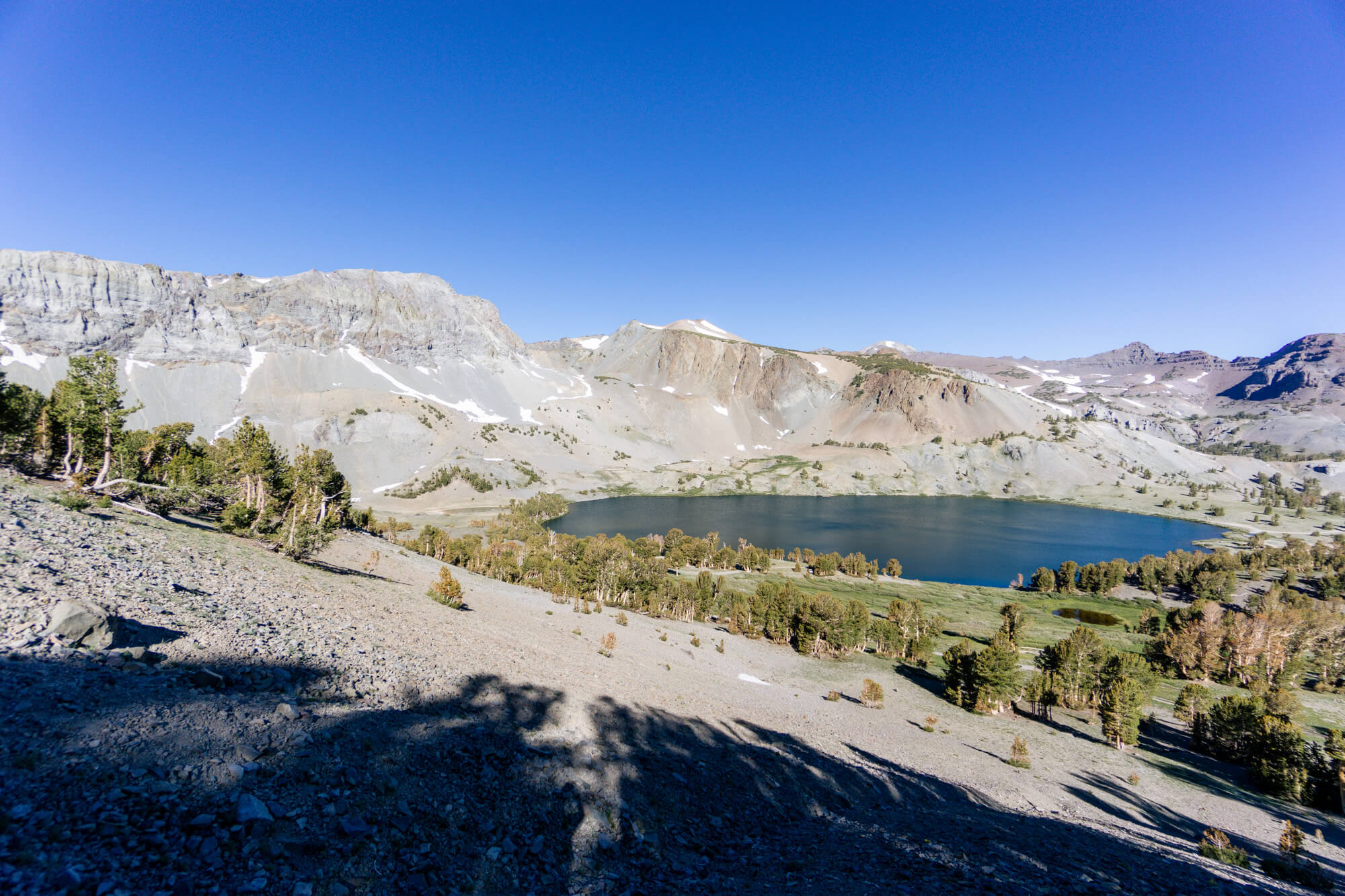
The first mile of the hike was the steepest part, so we got some nice views right out of the gate. I noticed immediately that tree line is quite a bit lower this far north. I’m used to being greeted by the “no fires above 10,000 ft” sign on my trips, but this year we got “no fires above 9,000ft”.
At the very top of the first “pass” there was a tiny snow field and I managed to snap a cool picture of some alpine buttercups with my dad crossing the snow field in the background. A classic Sierra summer picture – wildflowers and snow, quite the juxtaposition.
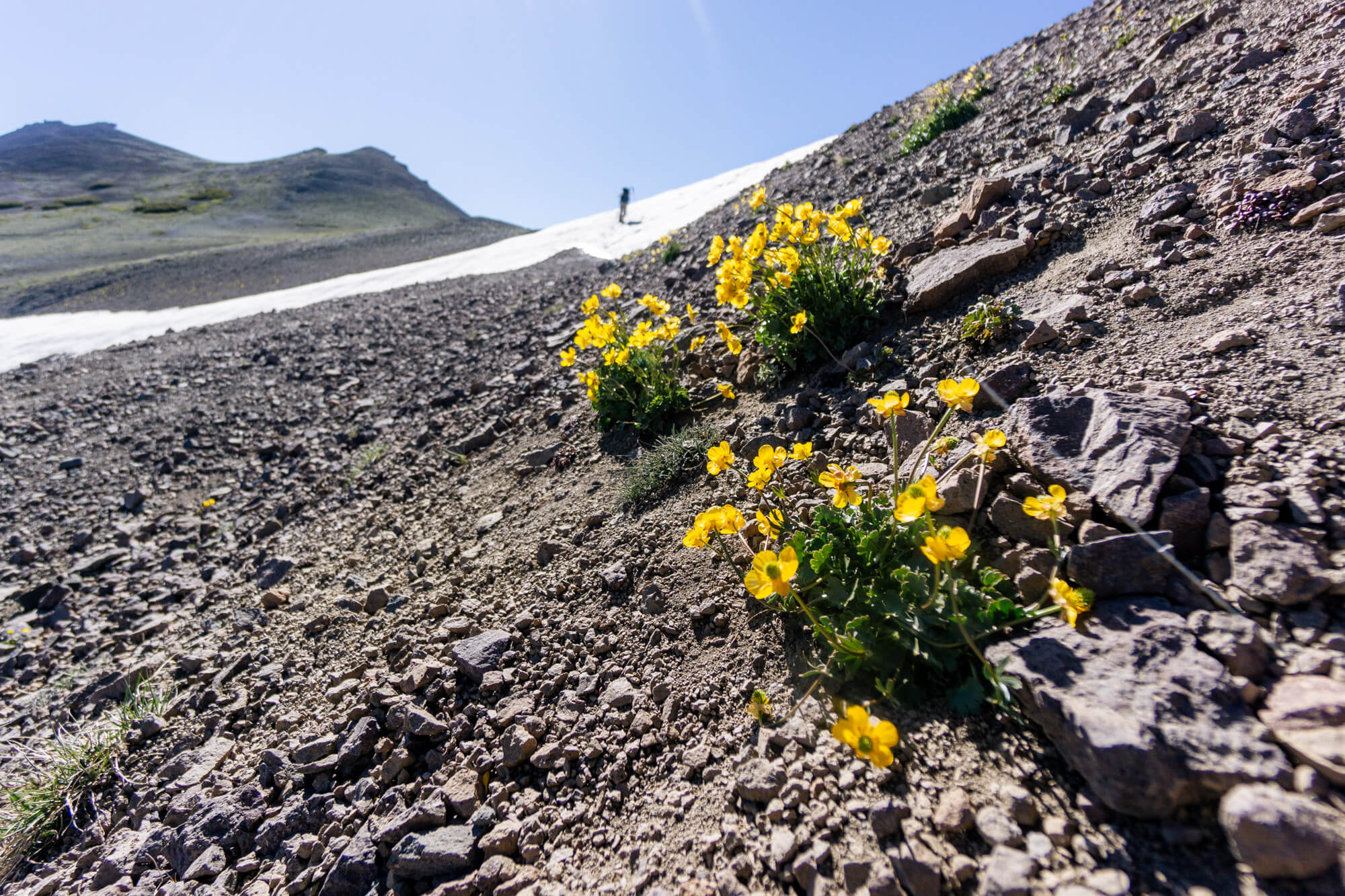
At the top of this first hill we were met with some amazing long sighted views of prominent peaks in Northern Yosemite, as well as a perfect view of the task in front of us. We could see the old mining road cut right into the side of the mountains and through a couple of lingering snow banks.
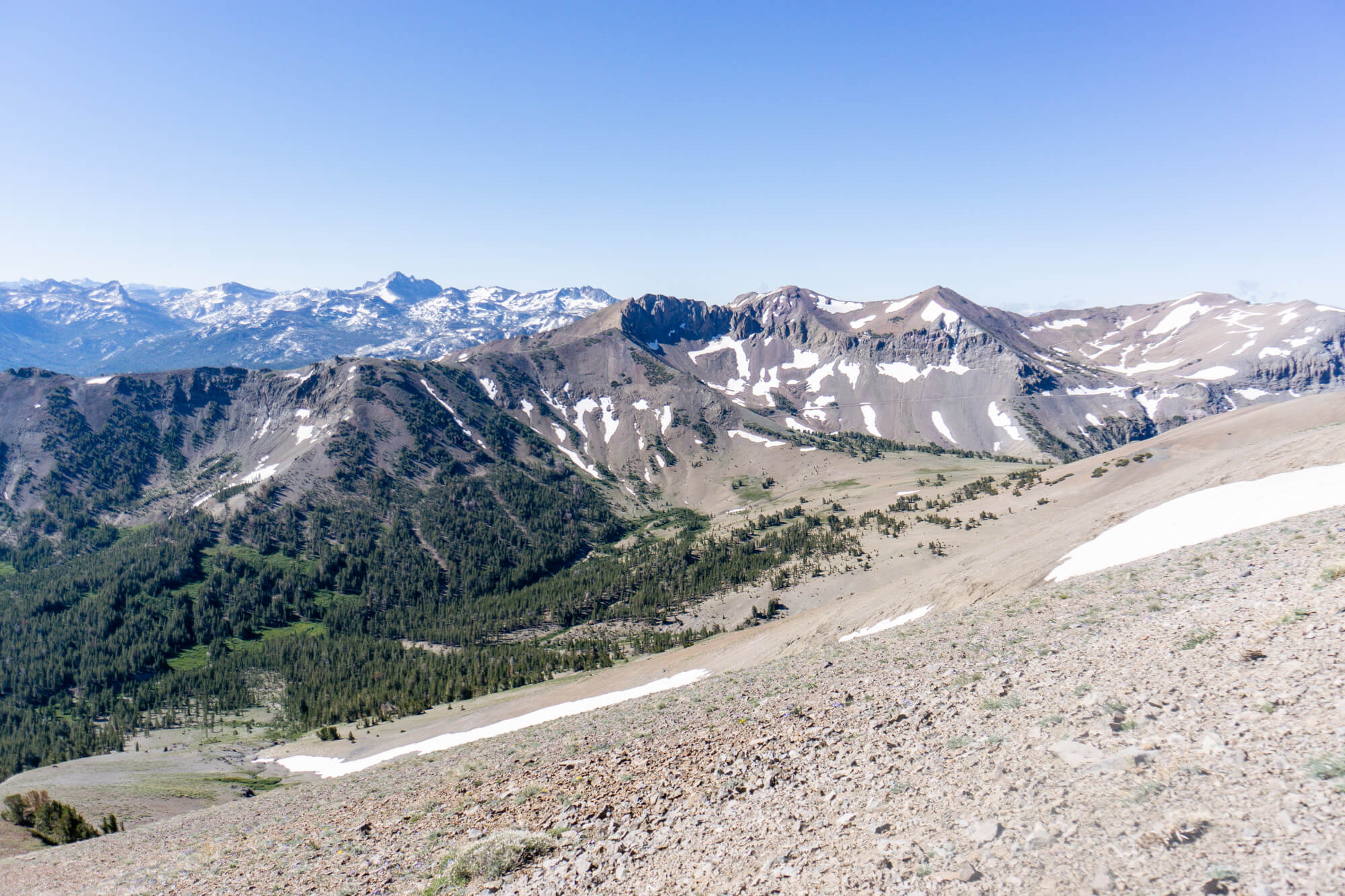
We wandered down the backcountry freeway for 2 miles passing close to double digit hikers heading north, until we got to a saddle and the Sierra Crest. This open gravely meadow was filled with wildflowers – a theme for our trip this year. You’ll notice in the picture below, off in the distance near the trees a section of ground colored purple due to the amount of flowers.

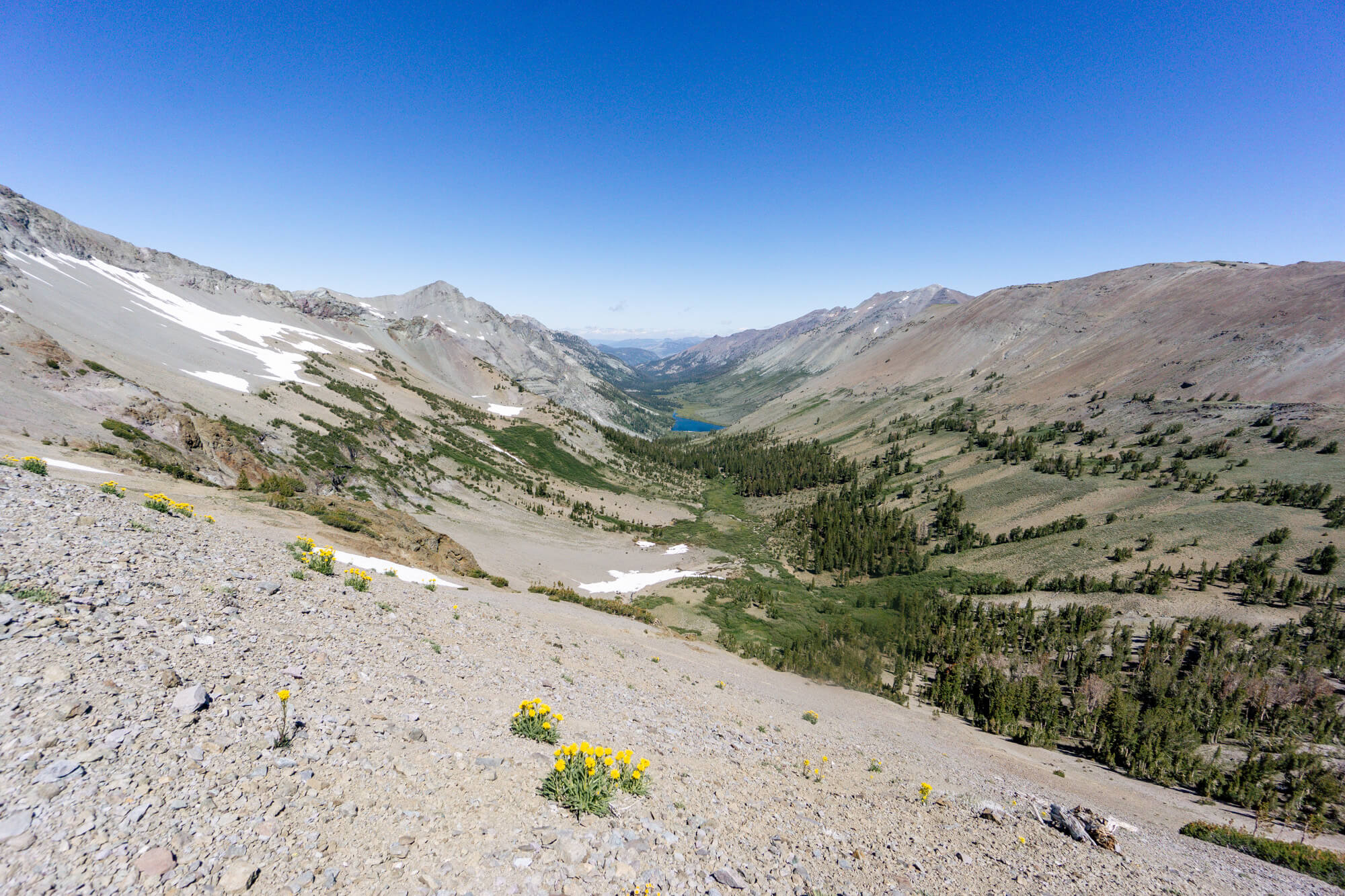
The next 3 miles of uphill were the toughest part of the hike, but it was nicely graded so we trudged on with a speed usually reserved for day 2 or 3 of a week long trip. The only tricky parts were climbing across a few steep snow fields, but the snow was soft enough to cut good steps so it was no issue.
After about 4 hours of hiking, we reached our second summit and finally laid eyes on the area we were set to explore for the next couple days. We took packs off and ate our typical day 1 lunch of Uncrustables (IFYKYK) and trail mix.
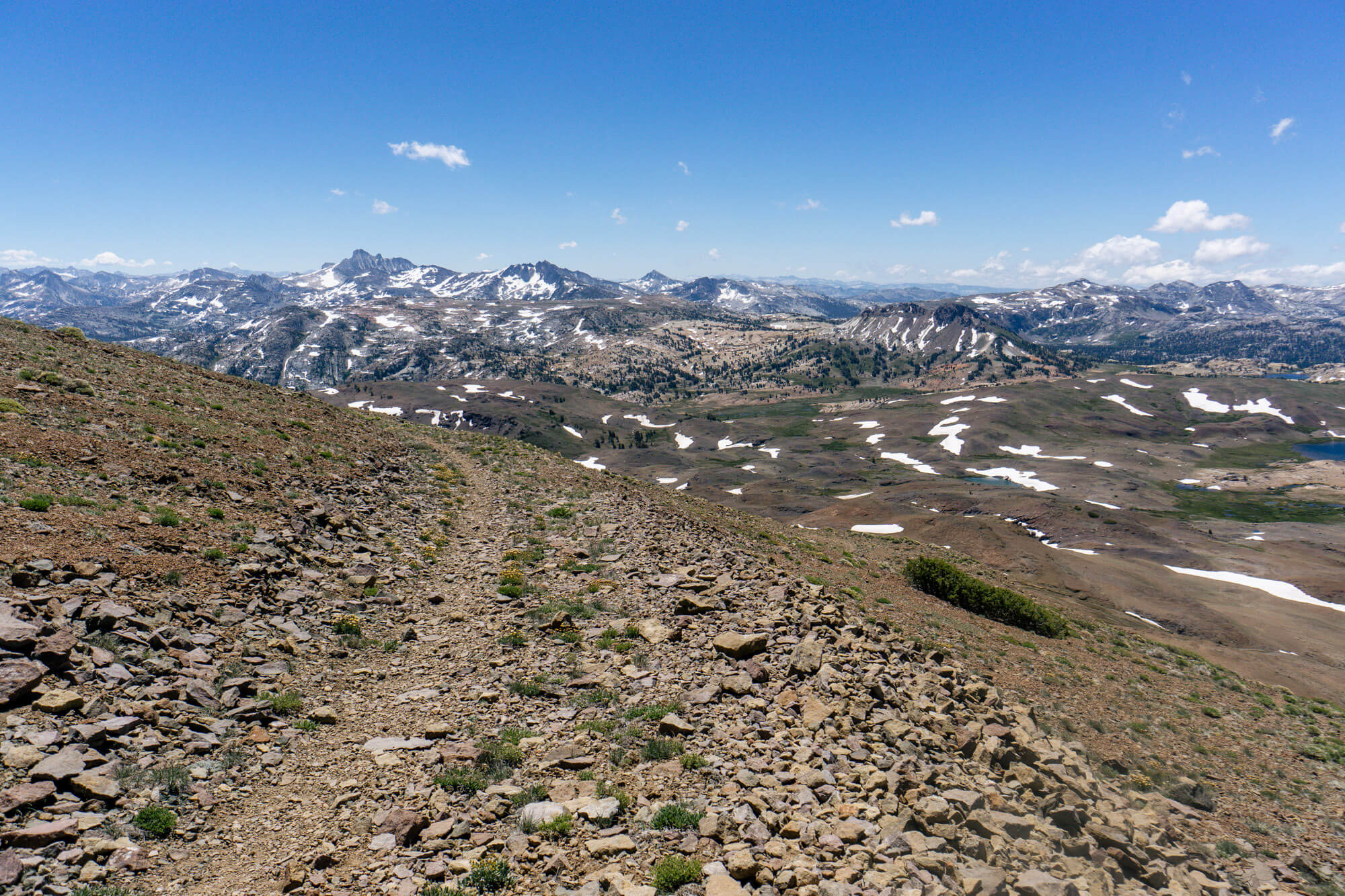
After lunch, we walked for another hour down the mountain and through some of the most lush alpine meadows I’ve seen in the Sierra. I’ve read before that the amount of snow combined with the volcanic soil leads to the prolific wild flower blooms the Emigrant is known for.
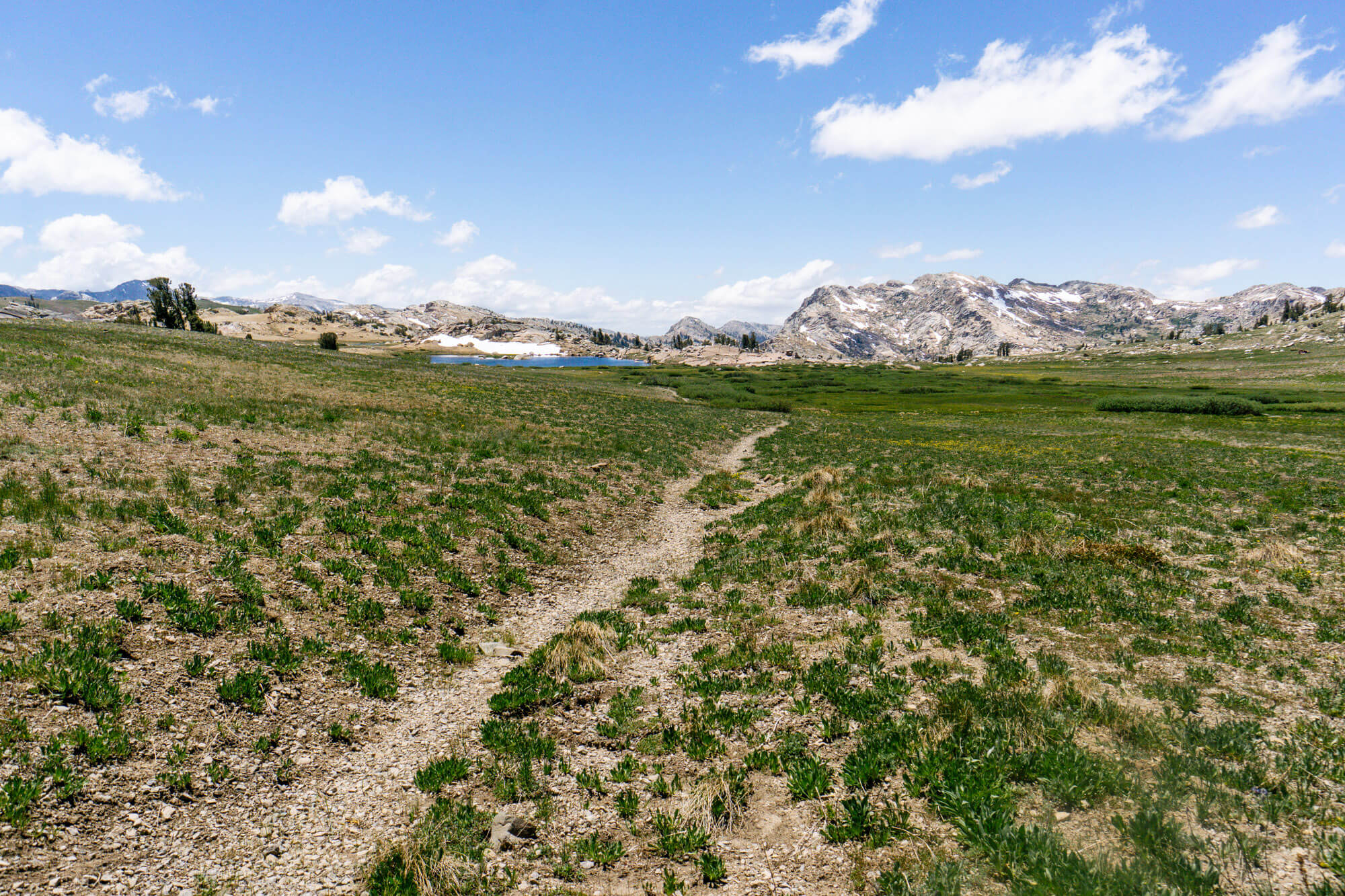
At around 1:30 we reached our destination for the day, setup camp, and as I often do, quickly busted out the fishing gear. I started to circumnavigate the lake in a counter clockwise direction because there looked to be some nice drop offs on that side of the lake. The first section was extremely muddy from a giant melting snow bank and it was at this point I got my first exposure to the legendary Emigrant mosquitoes. It was pure insanity. I was swarmed by seemingly thousands, if not millions of mozzies that were breeding in standing water and hiding from the wind in the nearby bushes.
I went into full lockdown mode, hood up and sprinted around the lake away from the snow melt. Fortunately I was able to escape the hoard, however the rest of that side of the lake was not much better. The only saving grace was the afternoon breeze which batted the mozzies down and made it somewhat bearable. I continued around the squishy shoreline looking for fish, but there was a problem: I was casting right into the wind and it was quite shallow.
After an hour of searching and casting and not seeing anything, I finally decided to get the wind at my back. I started seeing some signs of life and fish cruising in the shallows. I spooked the first one, but managed to get my line out of the reel fast enough to get my leech in front of the second and he smashed it.
Meet my new personal best Brookie:
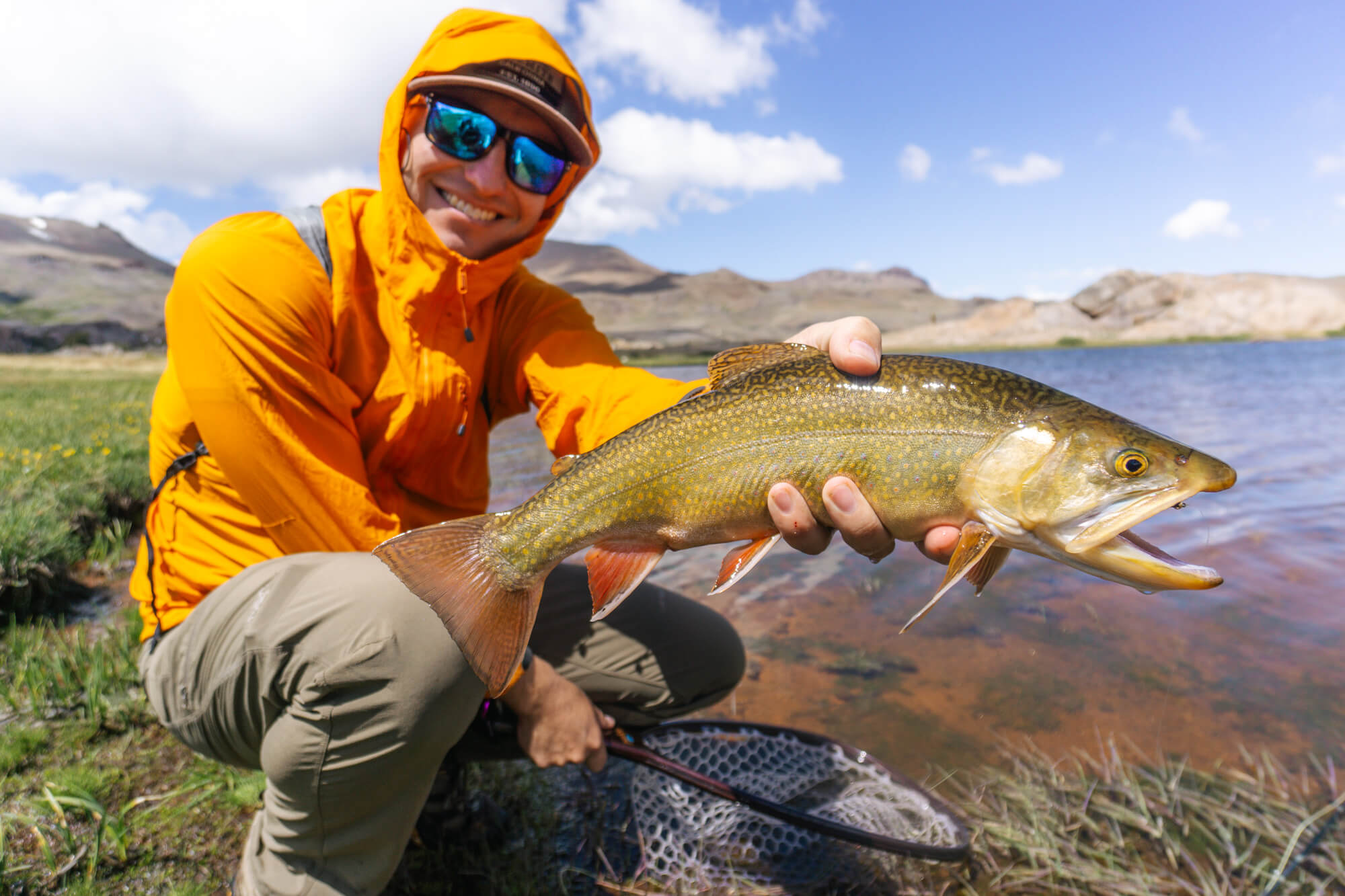

After that brief moment of excitement, the lake went pretty quiet for the next couple hours, until around 4 PM. For the next hour, I had one of the hottest stretches of fishing in my life if you combine quantity and quality (another one came later on this trip). It was a case of right place, right time, and right fly. I hooked 4 and landed 3 stout brookies which made my day.
When I was looking at the pictures after the trip, I noticed that these fish, despite their size, are pretty bland for brook trout; in particular the pink spots are extremely faint. Since it was early July, they were also lacking the fiery red orange spawning colors. I suppose the mottled green color helps them blend into the dirt lake bottom and I’m definitely not going to complain about the size. They were strong fighting fish that took a while to land and were a pleasure to catch.
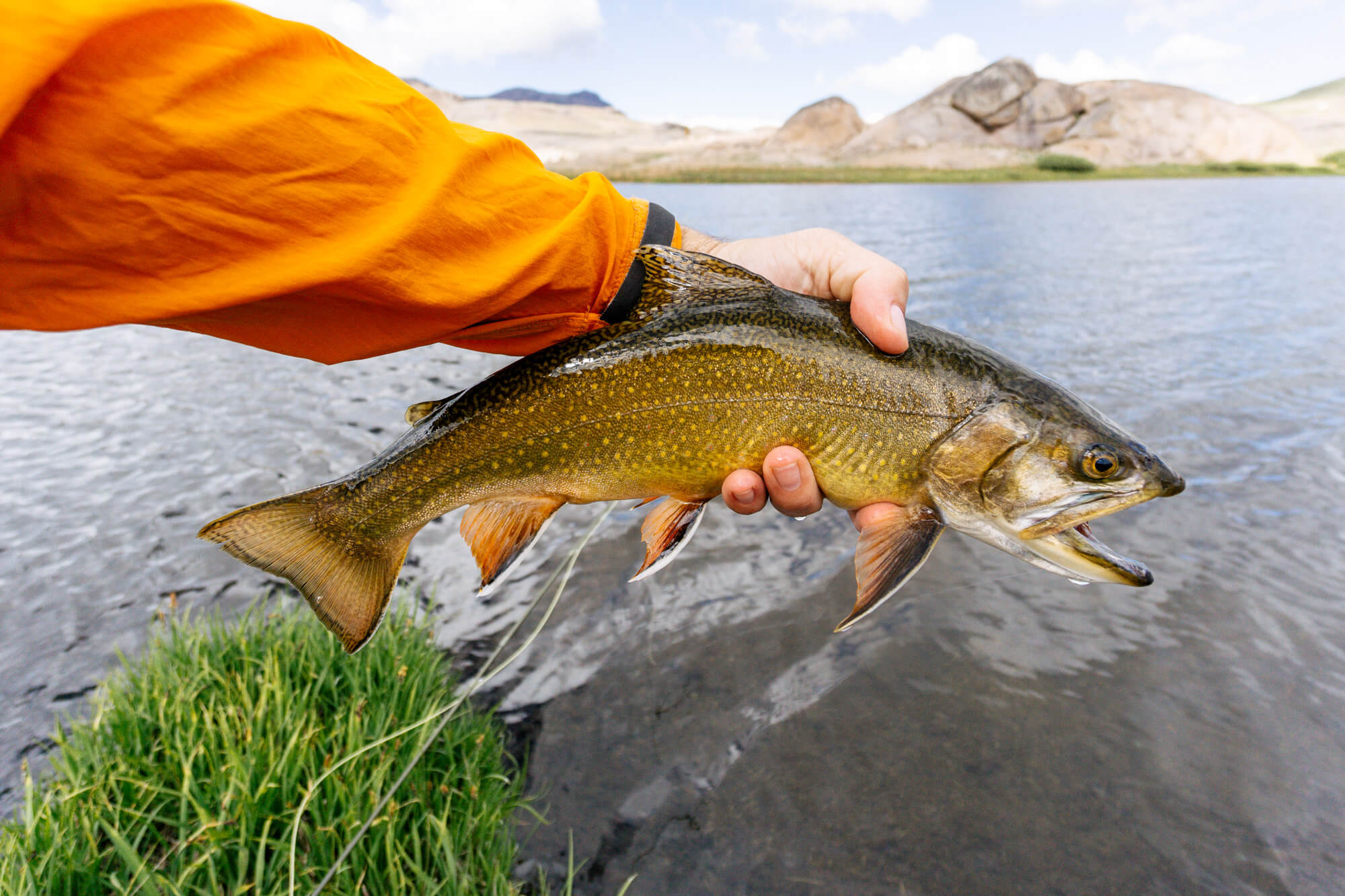


After dinner I wandered around attempting to capture the scenery in the fading light. There was a spectacular view of the lake below near our camp site and the hill in front was dotted with stands of lupine and other wildflowers.
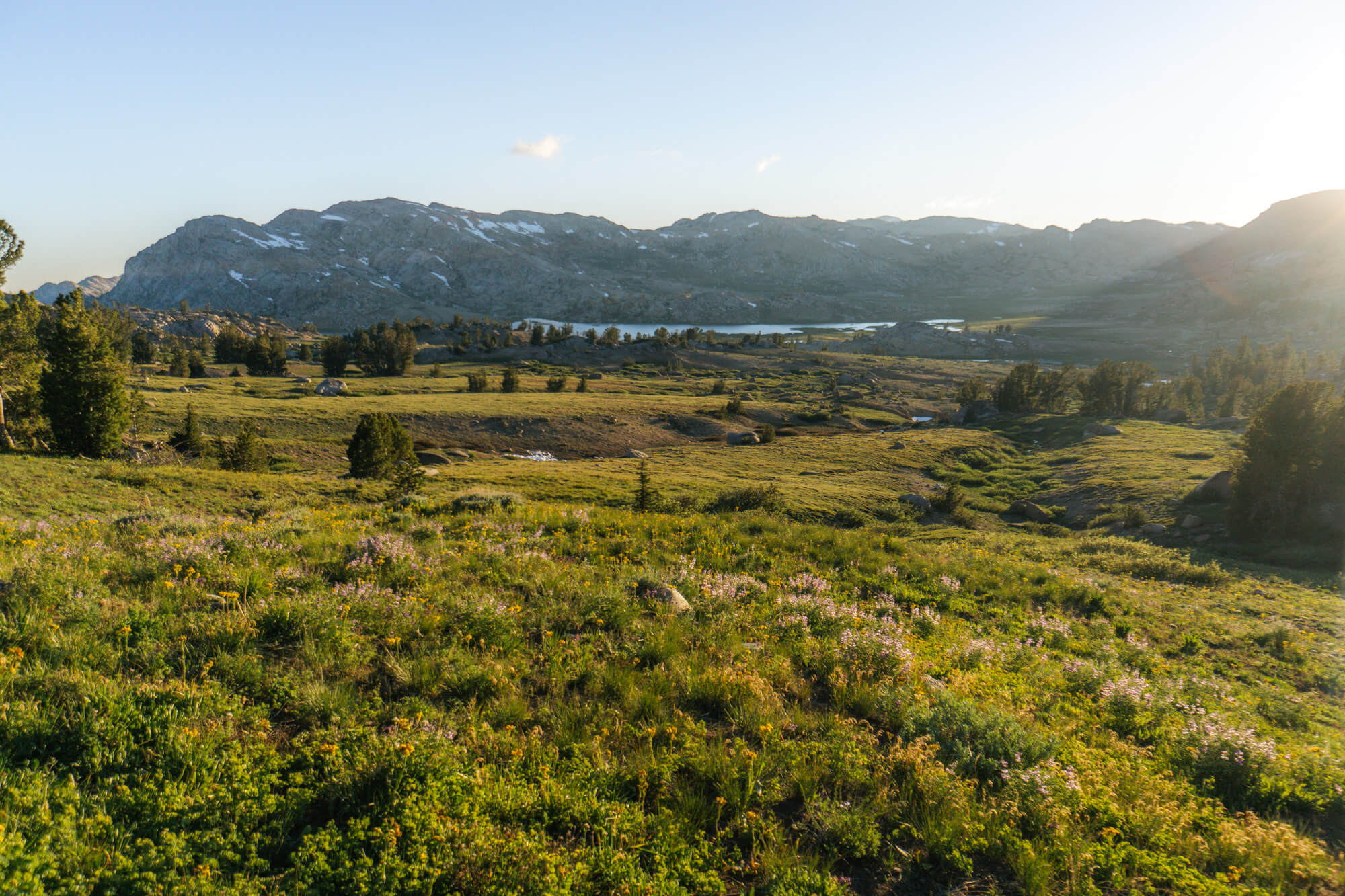

I turned back towards camp as the light was touching just the tallest peaks and snapped a couple of pictures of our site for the night as well as the peculiar man made dam. A dam like this is not something you usually see in wilderness areas, however it is an artifact of the tungsten mining operations from the 60s to the 80s that litter the Emigrant Wilderness.


On July 7th the plan was to hike 4 miles down stream to one of the largest lakes in the Emigrant with one fishing stop along the way. We got going around 7:30 AM that morning and started fishing the lake directly below where we camped an hour later – but not before being swarmed by hoards of Emigrant mosquitos on the eastern meadow side of the lake. We dropped our packs at the deepest part of the lake with the driest shoreline, however it didn’t help much on this windless morning.

We started fishing fully covered with head nets, which was very annoying as the net makes sighting fish a lot tougher. But on a positive note, there was quite a bit of fish activity and we got some nibbles right away, but nothing would stick. It took 45 minutes before I hooked one and it turned out to be a solid, fat 12″ brookie.

We tried for another hour and a half, but to no avail, so we packed up and started hiking into the heart of the Emigrant. On the map there was supposed to be a trail, however we found it to be more of a casual use trail that would come and go. Since we knew the general direction it was heading, we were able to follow it pretty well. We passed by another lake on the way, but didn’t fish it.
Much of the middle part of the hike was tracking down the trail through a very lush valley filled with willows, grasses and small pines. The last stretch we switch backed down a hill and walked out into the broad valley where the creek we were following spilled into a giant lake. The lush meadow at the inlet was sublime.

We walked around the north side of the lake and down the trail, looking for a camp site. There were a couple large ones, but both were shockingly taken. I did not expect a lake 12+ miles from the nearest trailhead to be this busy on a Thursday after a holiday weekend. We ended up walking nearly two thirds the length of the lake looking for a suitable site but many of the flat spots further down were marked as “No Camping, Restoration Site.” We made a small flat shelf about halfway down work. It ended up giving us a lot of privacy which was great.
We had the best back country lunch on the planet (PackItGourmet All-American Burger Wrap) then started fishing. There were some deeper drop offs at this lake so I put on my new Rio Sink Tip Versileader. I found these this year and after fishing them on this trip, can confirm they’re great for backcountry lakes. They are 7 or 12 ft sinking leaders that you can attach to your floating line which allow you to fish deep without carrying another spool with a dedicated sinking line. We got the fastest sinking (7 inches per second) and longest leader, but I’d recommend getting the 3 or 4 inches per second sink rate at 12 ft if you’re fishing with 4 weight. I had a tough time casting the long heavy leader and it almost sunk too fast.
Despite all the complaining I caught fish with it – a nice 15″ rainbow and 9″ brookie.
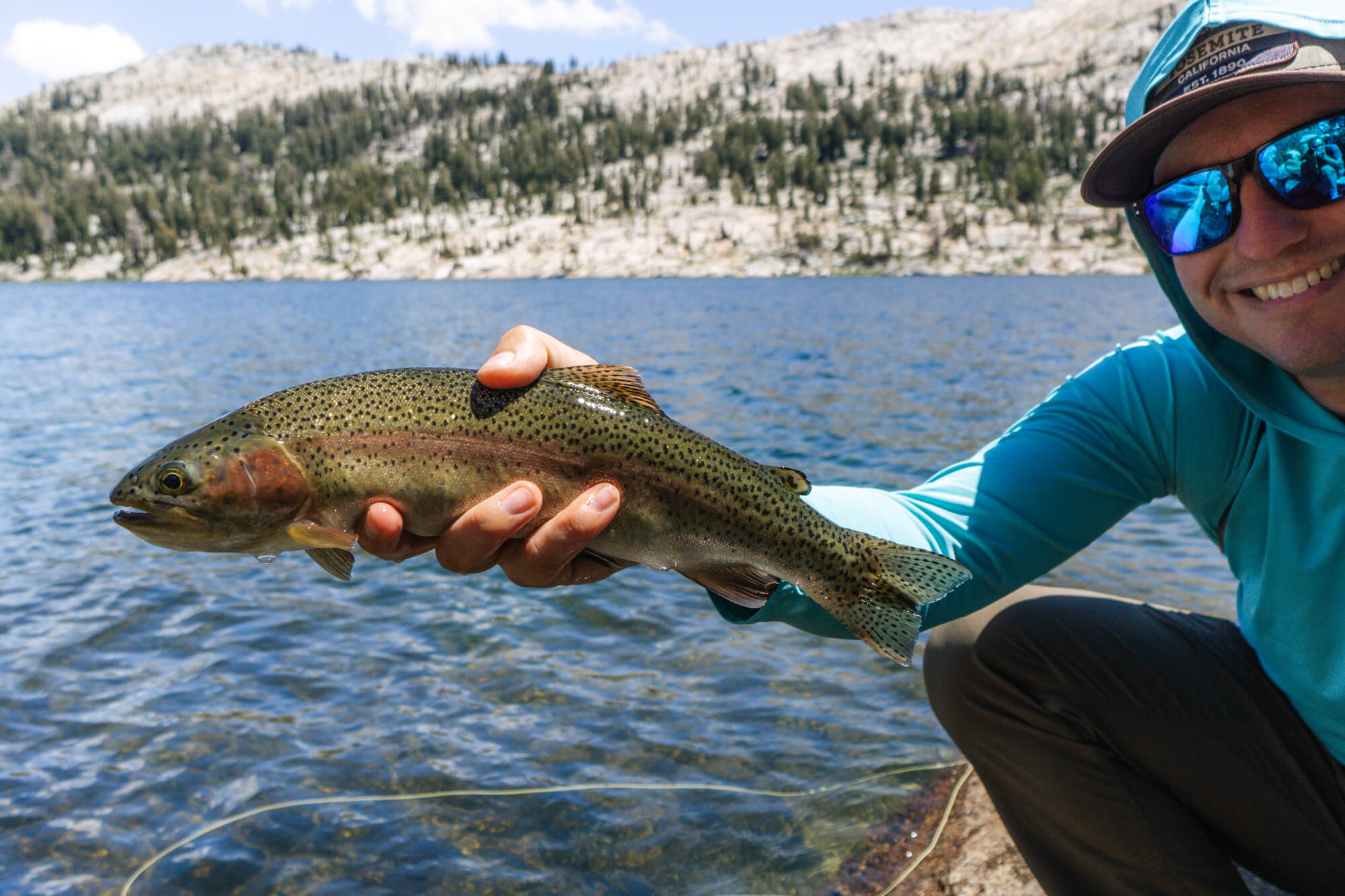
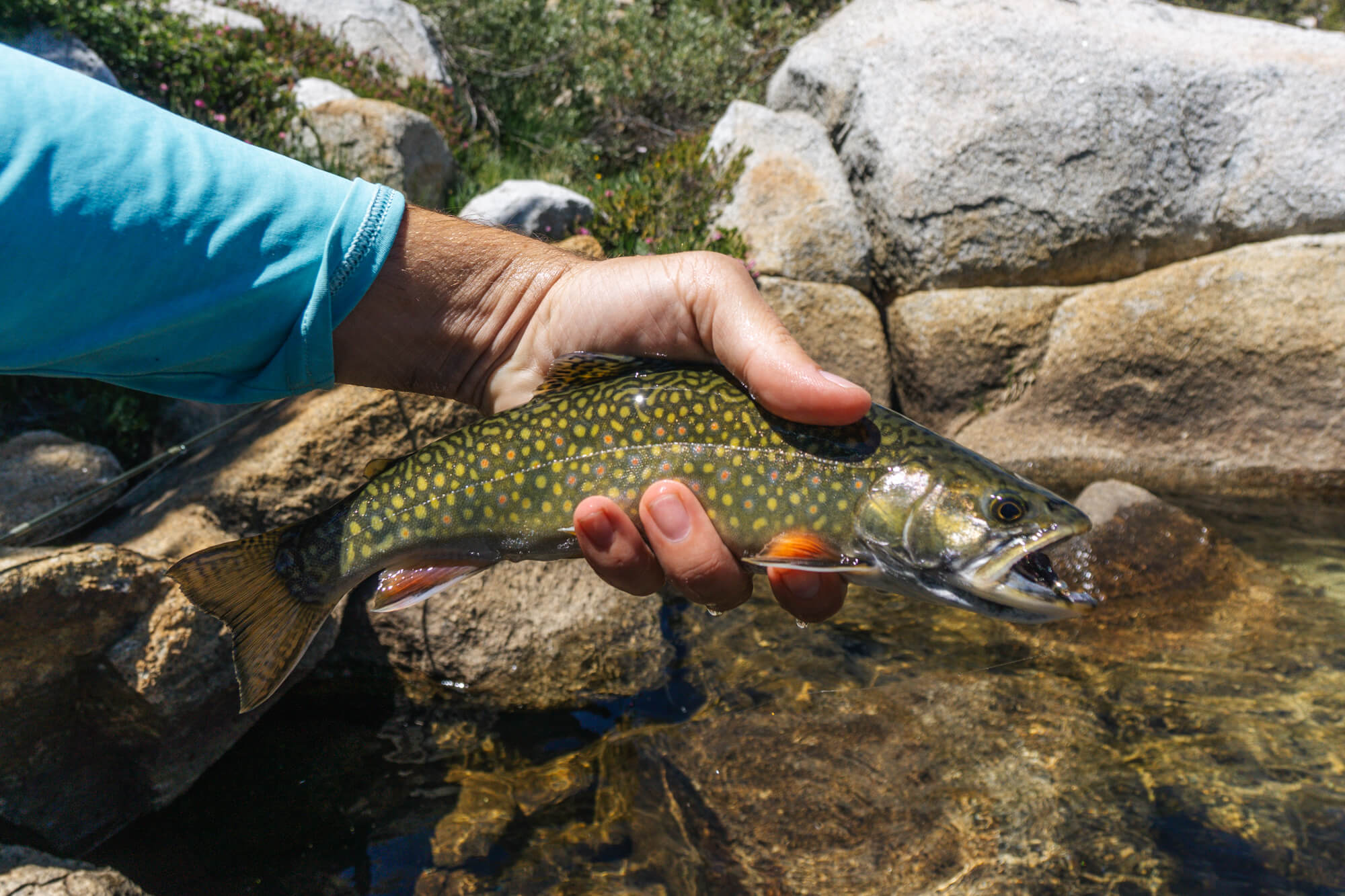
I caught both fish right near our campsite, but I wanted to go up towards the inlet and explore that end of the lake. We passed a fellow fly fisherman on the way and he said he caught 4 rainbows in the shallow water right along the reeds with a midge dry fly. Nice, good sign.
When we got to the inlet, my brother took a different strategy from me and my dad. He waded out in the shallow water where the creek flows in and fished along the reeds. My dad and I focused on the creek in hopes there would be some post-spawn rainbows still milling about.

I ditched the sink tip and tied on a tungsten bead soft hackle hares ear and started slowly stripping it through the deep sections of the creek. At the first hole, we spooked what looked like a large 16-18″ rainbow, which was encouraging. On the third or fourth cast, my line came tight and I was hooked into a nice fish that took me for a ride towards the lake.
I don’t think I’ve mentioned it yet, but I was VERY thankful to have the net on this trip. We usually don’t take it because it’s extra weight and awkward to pack, but on a 4 day trip we were already 5-8 lbs lighter than normal so it made the cut this time. It not only helps land the fish faster, but keeps them in the water longer. I felt way better about all the fish I caught and released on this trip than I normally do. Definitely something to consider on future trips.
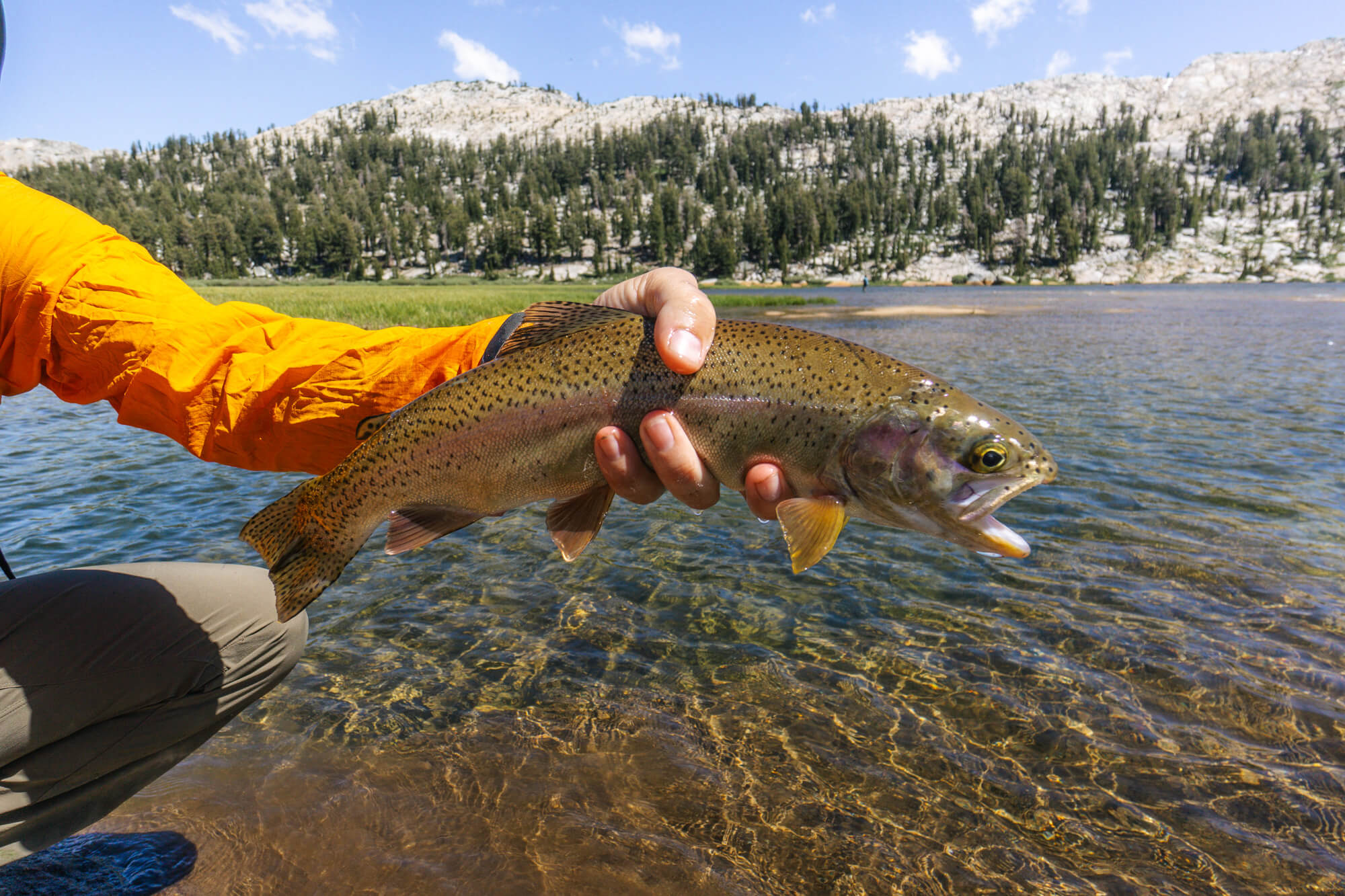
At this point, my brother was getting pretty frustrated that I had caught 7 fish on the trip to his 0, so he yelled over to me and asked what I was using. He tied on a bead head prince nymph and started stripping it away from the reeds and immediately hooked but lost 3 fish. The 4th one made it all worth it though and was probably the best fish of the entire trip.
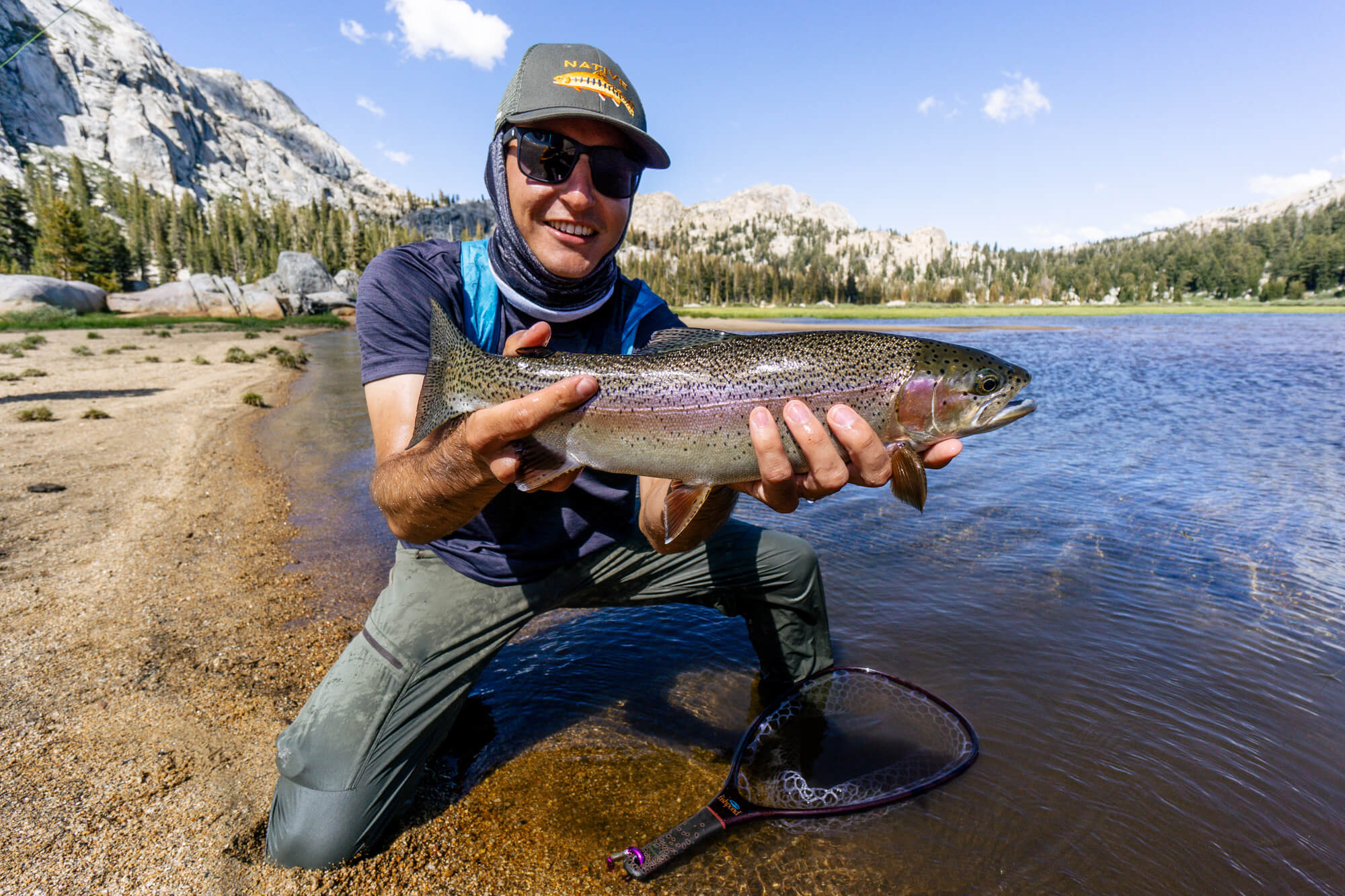
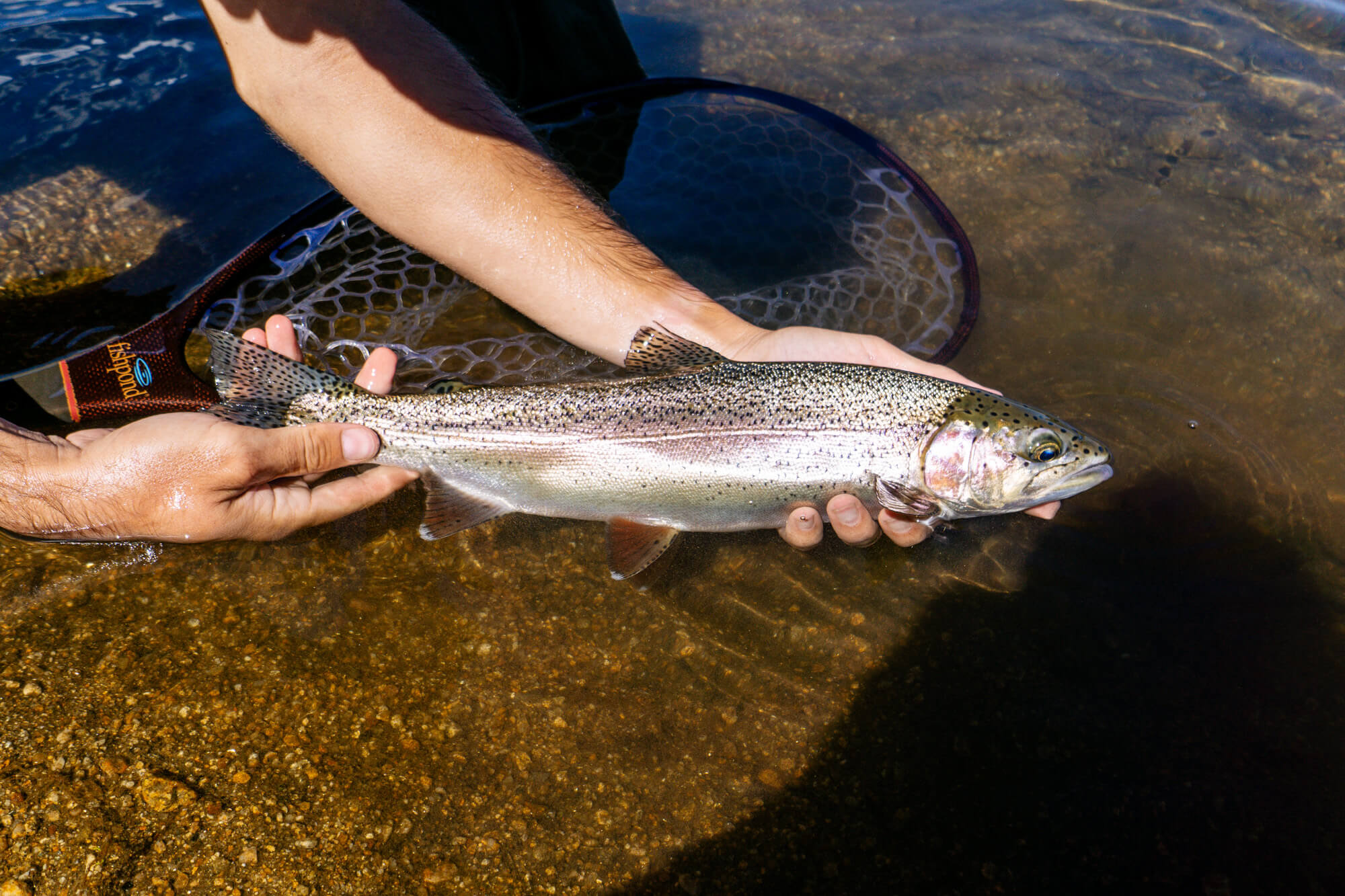
After this amazing fish, my dad and I took off our boots and walked barefoot out onto the shallow sandy flats near the inlet and tried to replicate what happened to my brother, but unfortunately we could not. The sun was starting to dip below the steep canyon walls so we retreated to our campsite for dinner and chores.
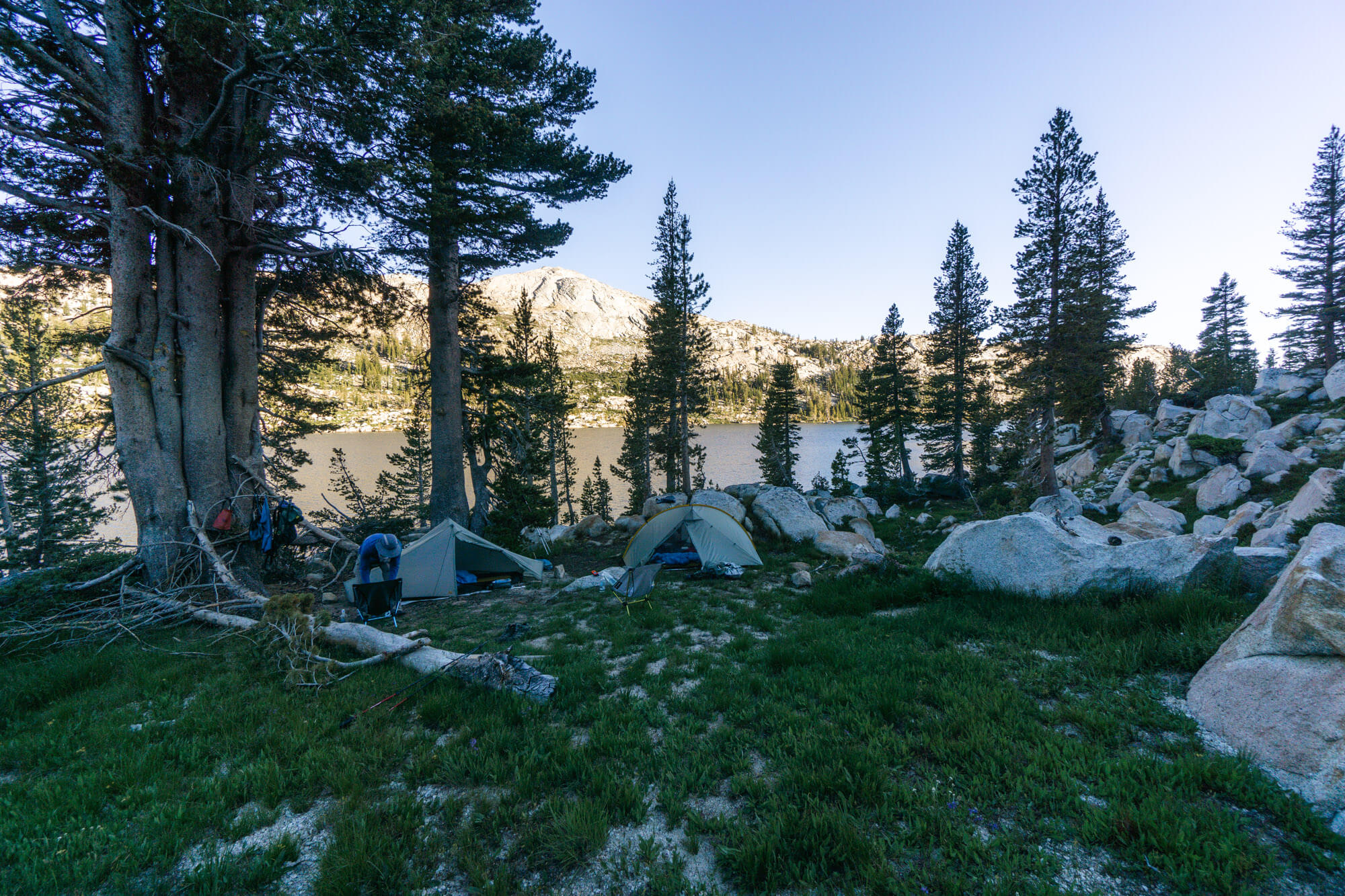
After dinner I tried fishing but to no avail. There were fish rising but they didn’t seem to be interested in what I was throwing. As I was standing on the rocky point looking at the alpen glow on the ridge to the right and peak to the left I asked my brother which one he thought the sun would stay on longer. He took the ridge and my dad took the peak. Interestingly it wasn’t even close. The peak had light on it for a good 30 minutes longer.
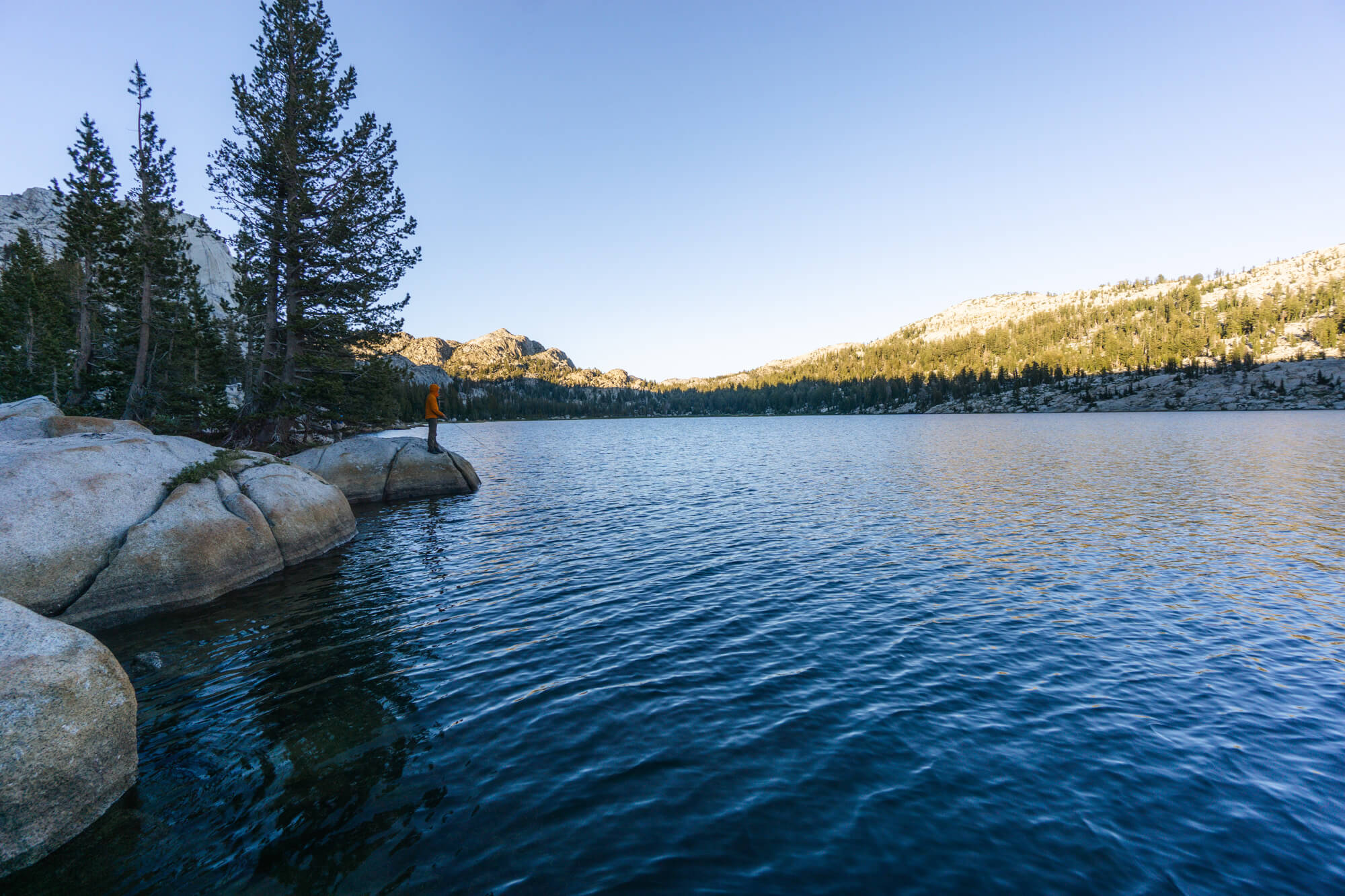

While I was fishing on the rocky point I noticed that there were some weird insect shucks attached to the grassy weeds along the shore. Upon closer inspection they were damselflies that had climbed the grassy reeds to escape into adulthood. They are a probably one of the main food sources of the fish in this lake and likely why a lot of them were cruising the shallow areas near the reeds.

The next morning we woke to the smell of smoke and some slight haziness. It didn’t seem like the smoke was in close vicinity so we didn’t feel threatened. I used my Garmin inReach to message Alyssa and she said it was from the Washburn Fire in the Mariposa Grove near Yosemite Valley.
The plan for July 8th was to hike back to our first campsite with a slight detour to a 4th lake. On our hike out we passed by some smaller ponds at the top of the first hill and they were such an idyllic setting and classic Emigrant wilderness I had to stop and snap a few pictures.


Most of the route was similar, but we took a slight detour over a near by bluff and got some nice views into a different part of the Emigrant and got a glimpse of our target lake.

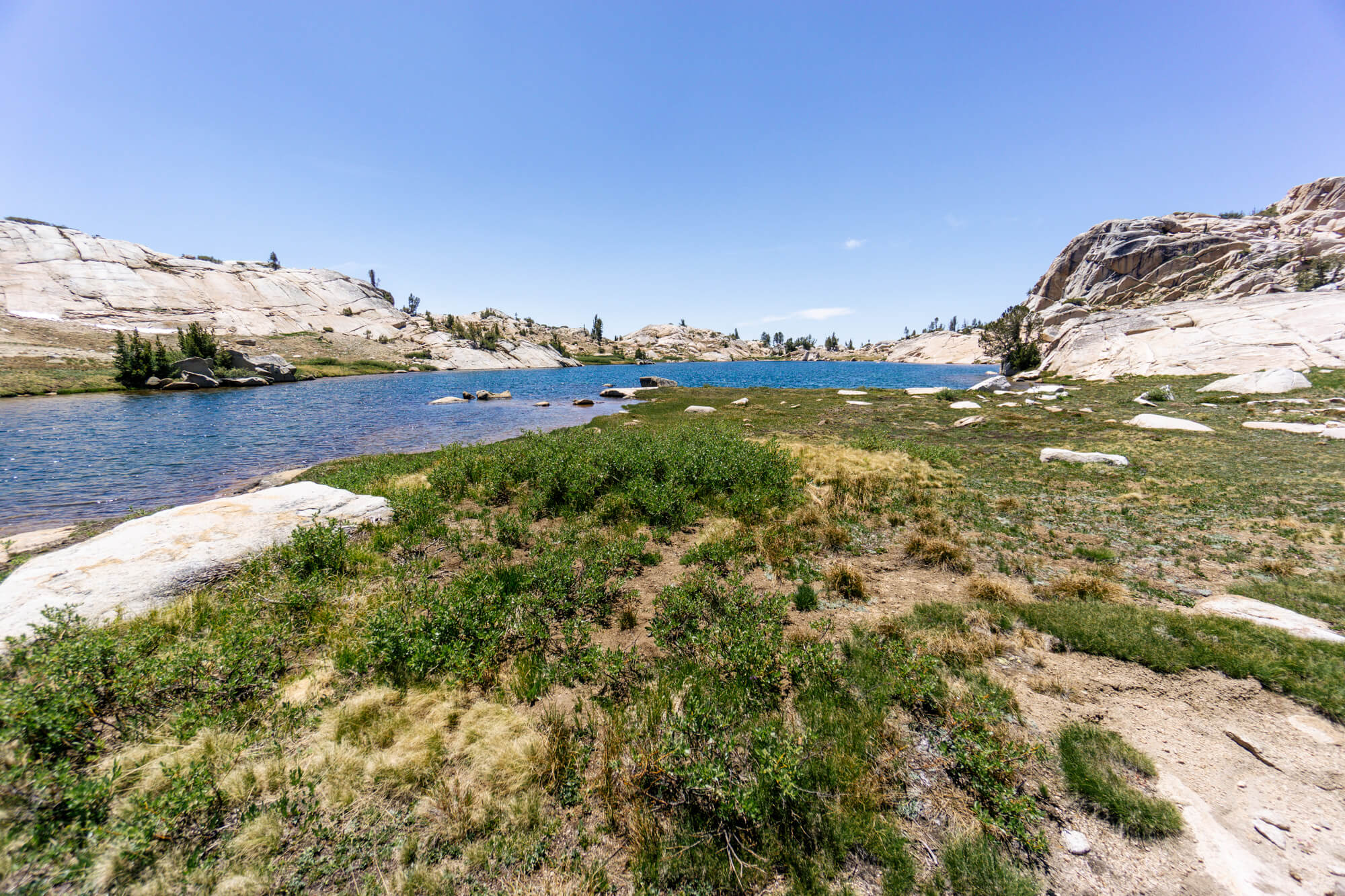
It was a small lake sitting at the top of the ridge captured by granite cliffs and grass banks. It seemingly has no outlet or a very slow flowing one. We dropped our packs, ate the infamous burger wraps and got down to business. I spotted a couple fish quickly and both my dad and I got some nibbles but they didn’t stick. About 1/3 of the way around the lake I was stripping a black leech and finally got a fish to stick. It was a nice 14″ brookie. Not as long as the ones from the first lake but clearly well fed.

The action was definitely slow at this lake after the somewhat fast start, so I started climbing the cliffs in an attempt to see into the depths, but it didn’t really reveal anything. My next strategy was to start flipping rocks along the shoreline to see what bugs were here. I immediately found a million cased caddis shells. It definitely explained why the one fish was so chunky.
I switched up my fly to the same tungsten bead soft hackle hares ear and on the 2nd or 3rd cast I hooked up on my 2nd and final fish out of this lake. A nearly identical 14″ fat specimen. I cannot understate how chunky these fish were, just look at the size of the body relative to the tail. I wonder why they don’t grow longer here? Maybe there are monsters waiting to be caught, who knows? I will definitely need to check this lake out again in the future.
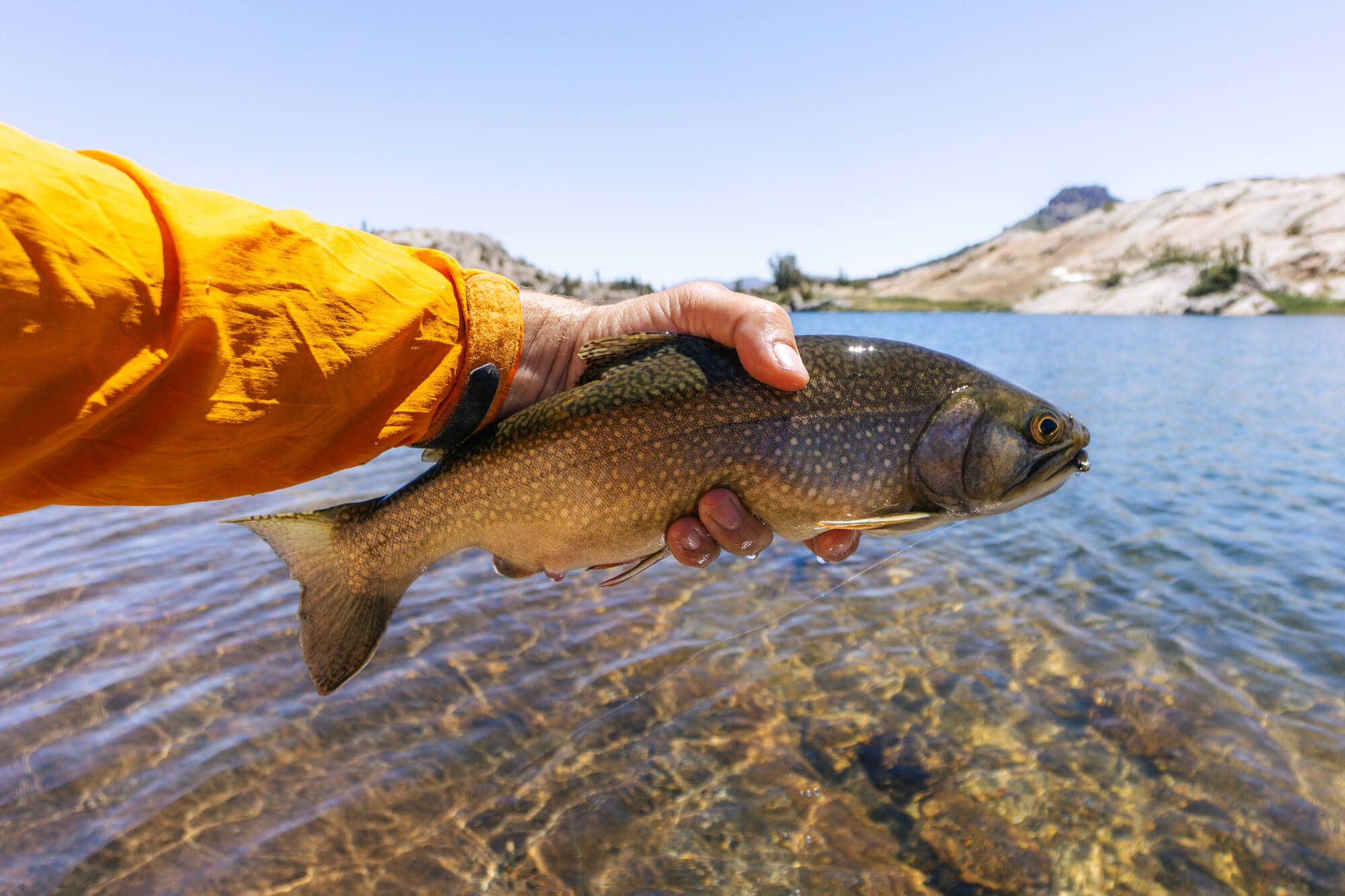
As I mentioned before this was my last fish before we decided to pack up and head towards the first lake which seemed to have some larger fish. We took a cross country route back and walked through the most unbelievable fields of wildflowers. I took the camera out and didn’t put it back until we got to camp.
This quick hike was one of the highlights of the trip and showed me a side of the Emigrant I wasn’t expecting but appreciated deeply.

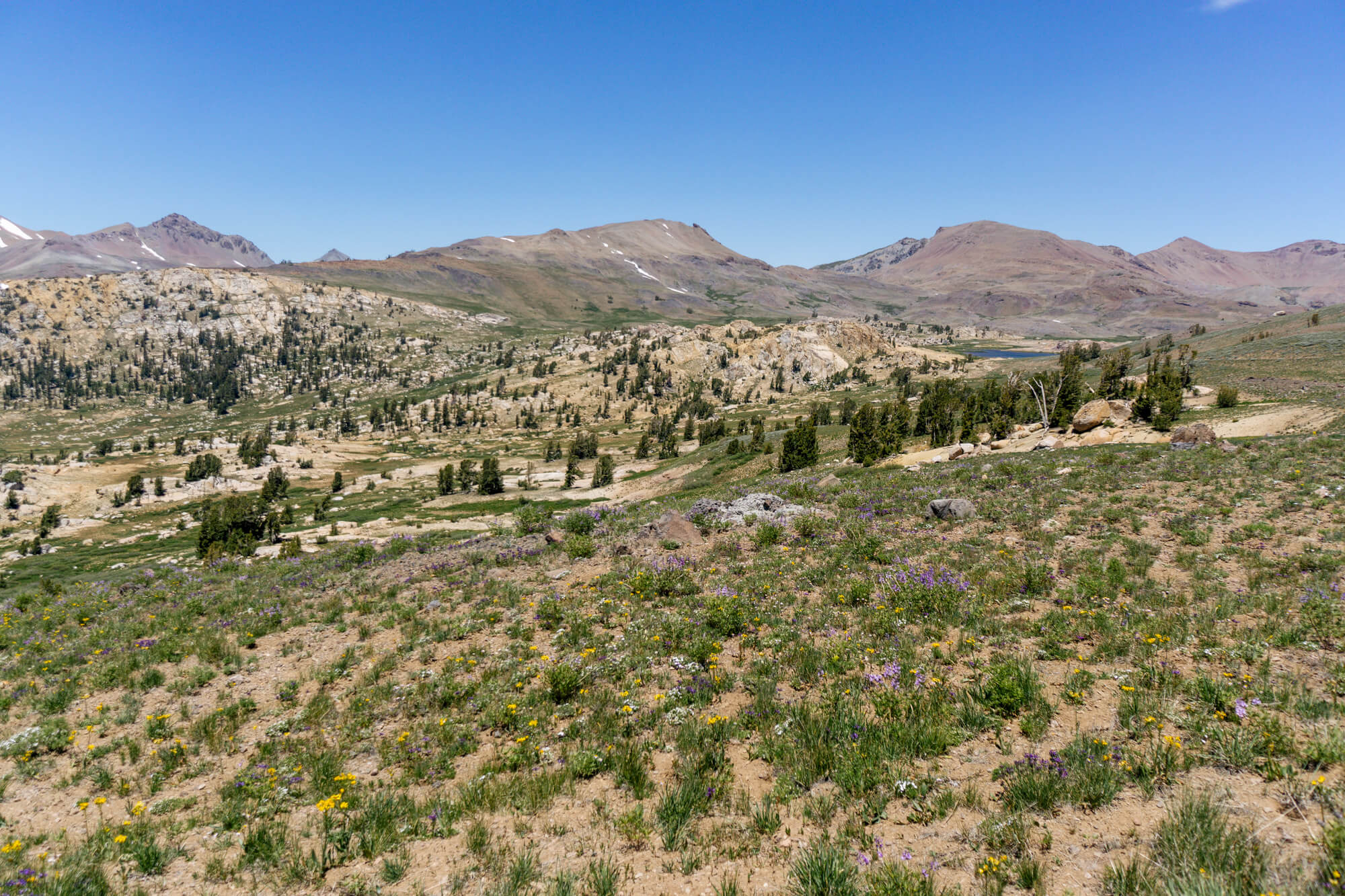

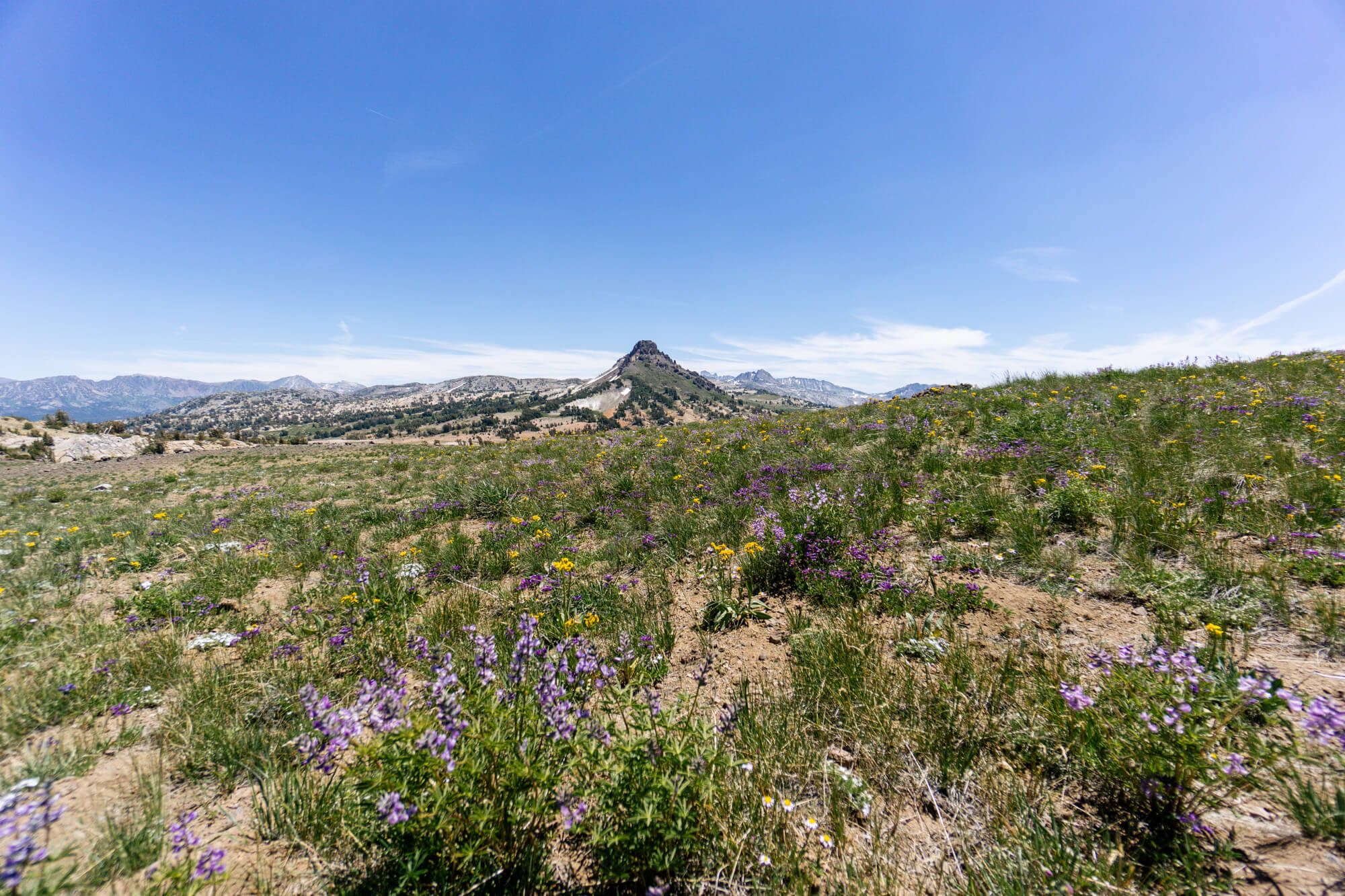
Once we got back to our night 1 camp and got settled in, I couldn’t help myself but attempt to catch a few more of the monster brook trout that live in this lake. It was about 4 PM when something interesting happened: I had completely blanked until that magical late afternoon hit once again. I’m not sure if it was because I changed my technique enough times until I finally found the fish or if this lake just turns on at 4 PM, but either way I had another one of those incredible 1.5 hour fishing sessions.
I had finally gave up fishing the shallower part of the lake and put on my sink tip and focused on the deepest part of the lake. I fished progressively deeper until I was finally worried about catching bottom and BOOM! Fish on.


From this point for the next 1.5 hours I would catch a fish every 5th cast or so with plenty of nibbles between. It was unreal – the perfect storm of time of day, location, fishing technique and fly, for the second time this trip!
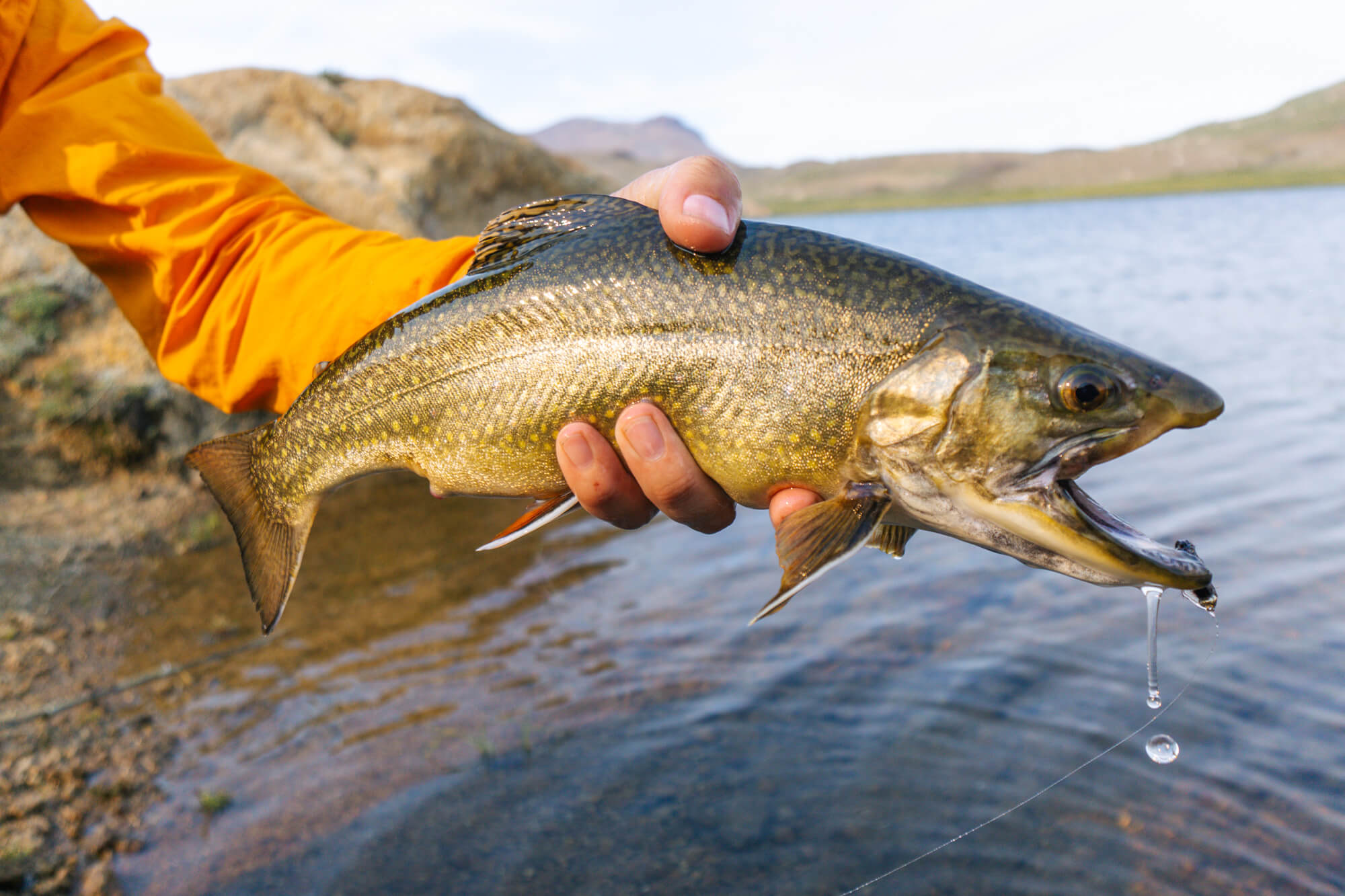

During this frenzy, the smoke had begun to roll in again with the wind and my brother captured this image of me on my rock with the red orange sun of smoke and late afternoon. It’ll always remind me of this incredible fishing session.
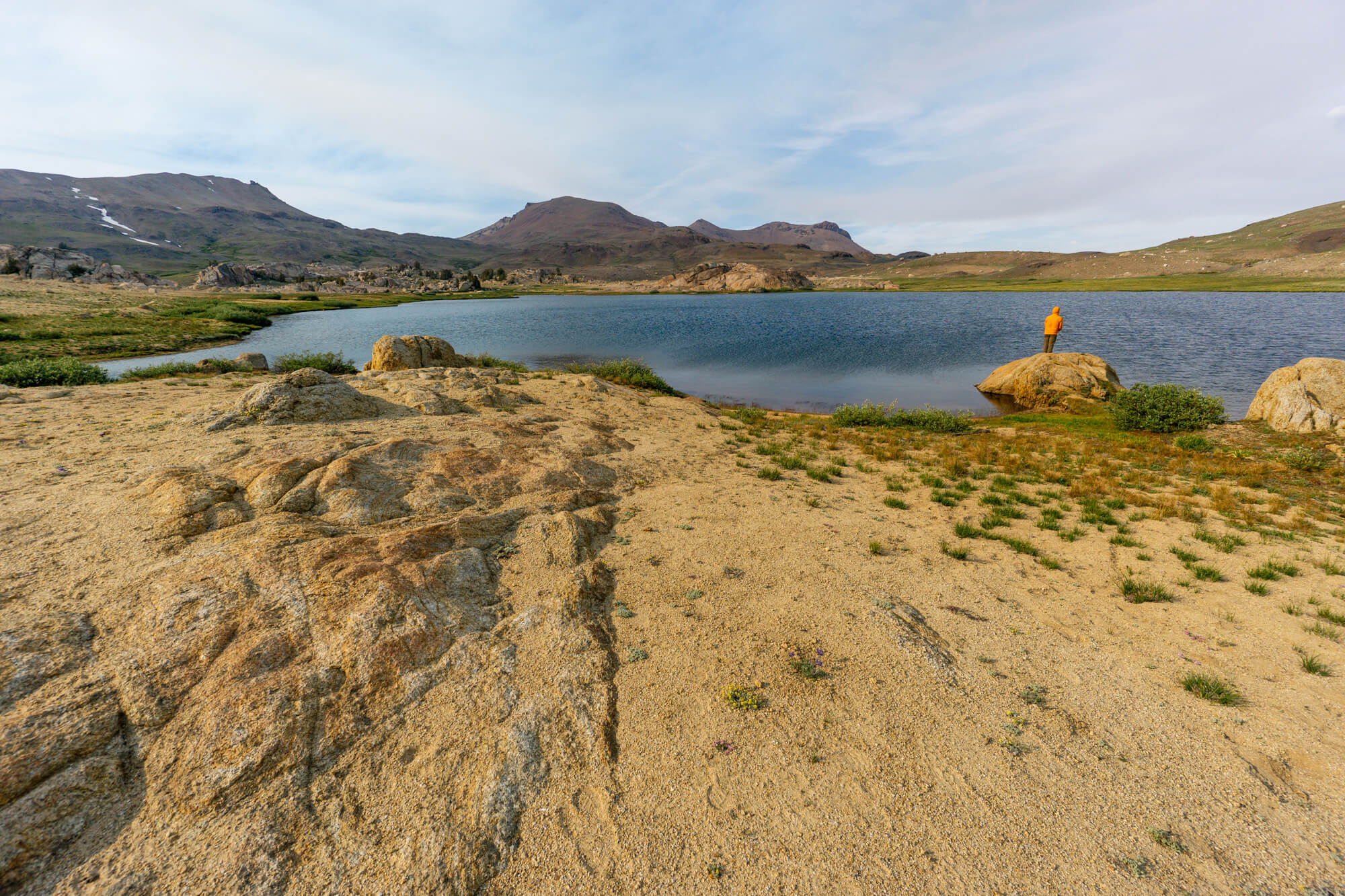
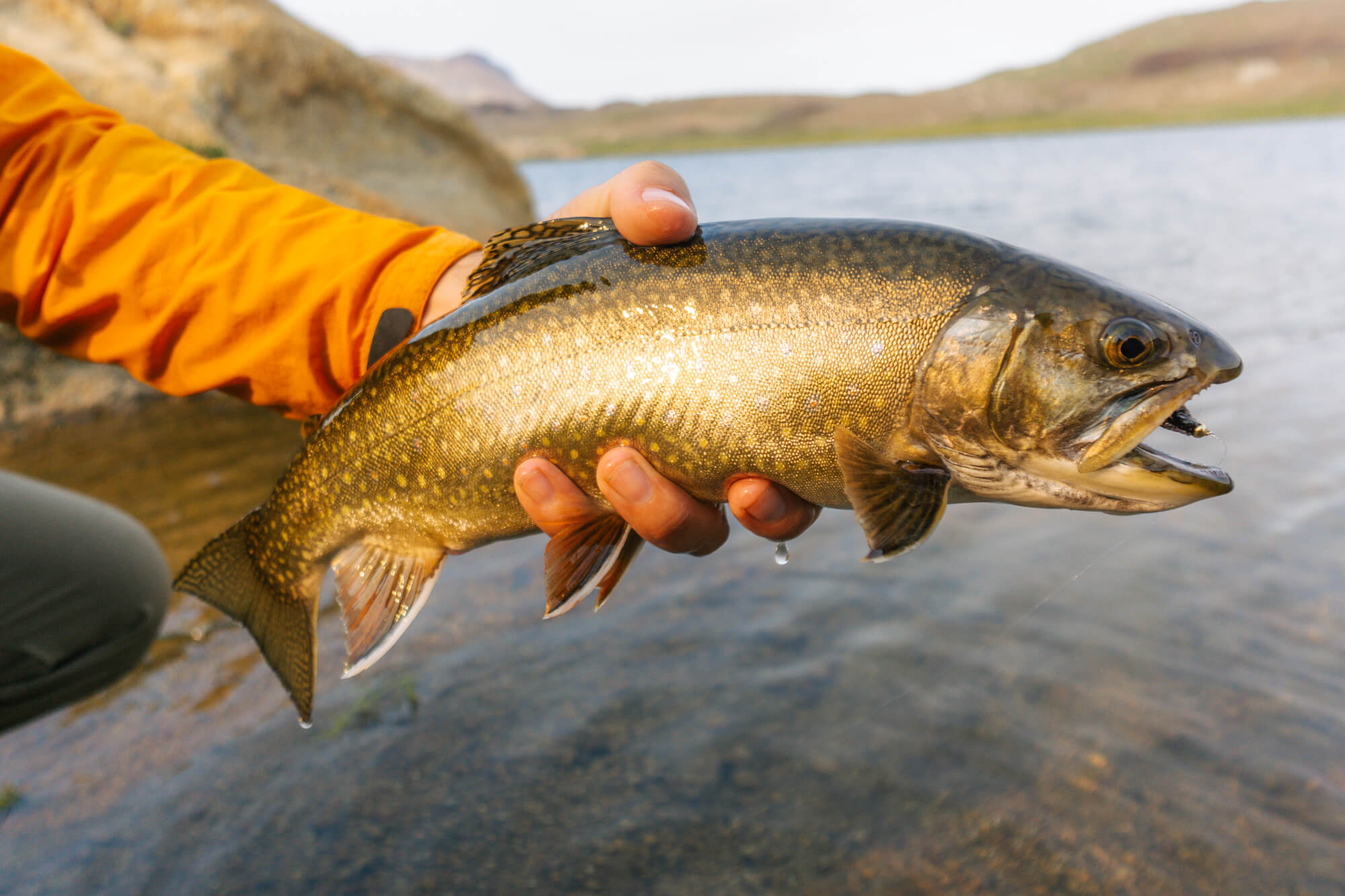
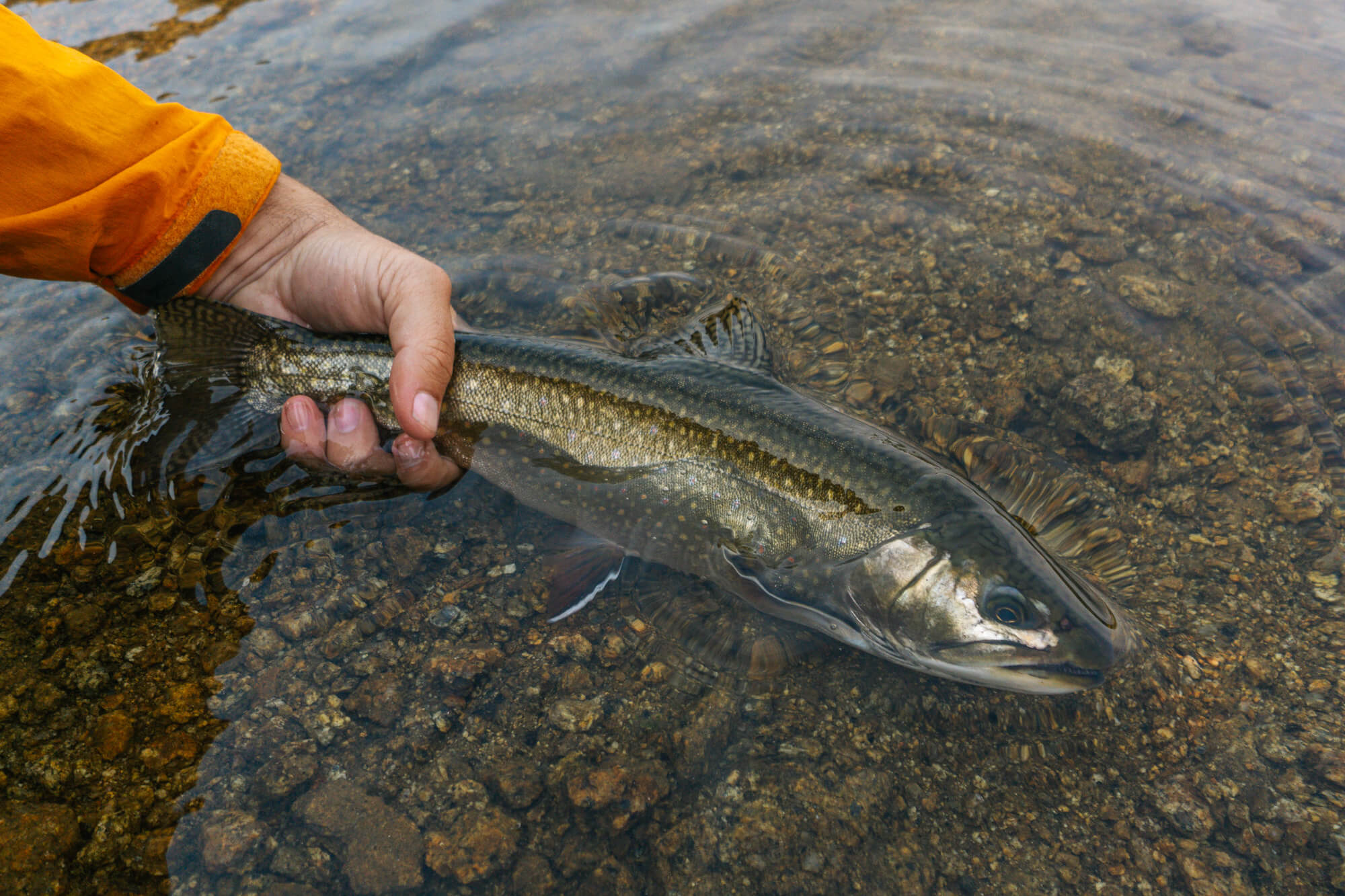
At 5:30 I decided to hang it up. I realized that I was completely fulfilled by what I was able to accomplish on this journey into the Sierra backcountry. Given where I was at just two weeks ago (sick with Covid), I was just lucky to be hiking, let alone catching these fish. It’s a great feeling to have at the end of a trip: complete gratitude for what you experienced.

After dinner I set out on my usual sunset jaunt and the smoky red skies did not disappoint. Aside from the fish pics these are some of the best images from the trip.
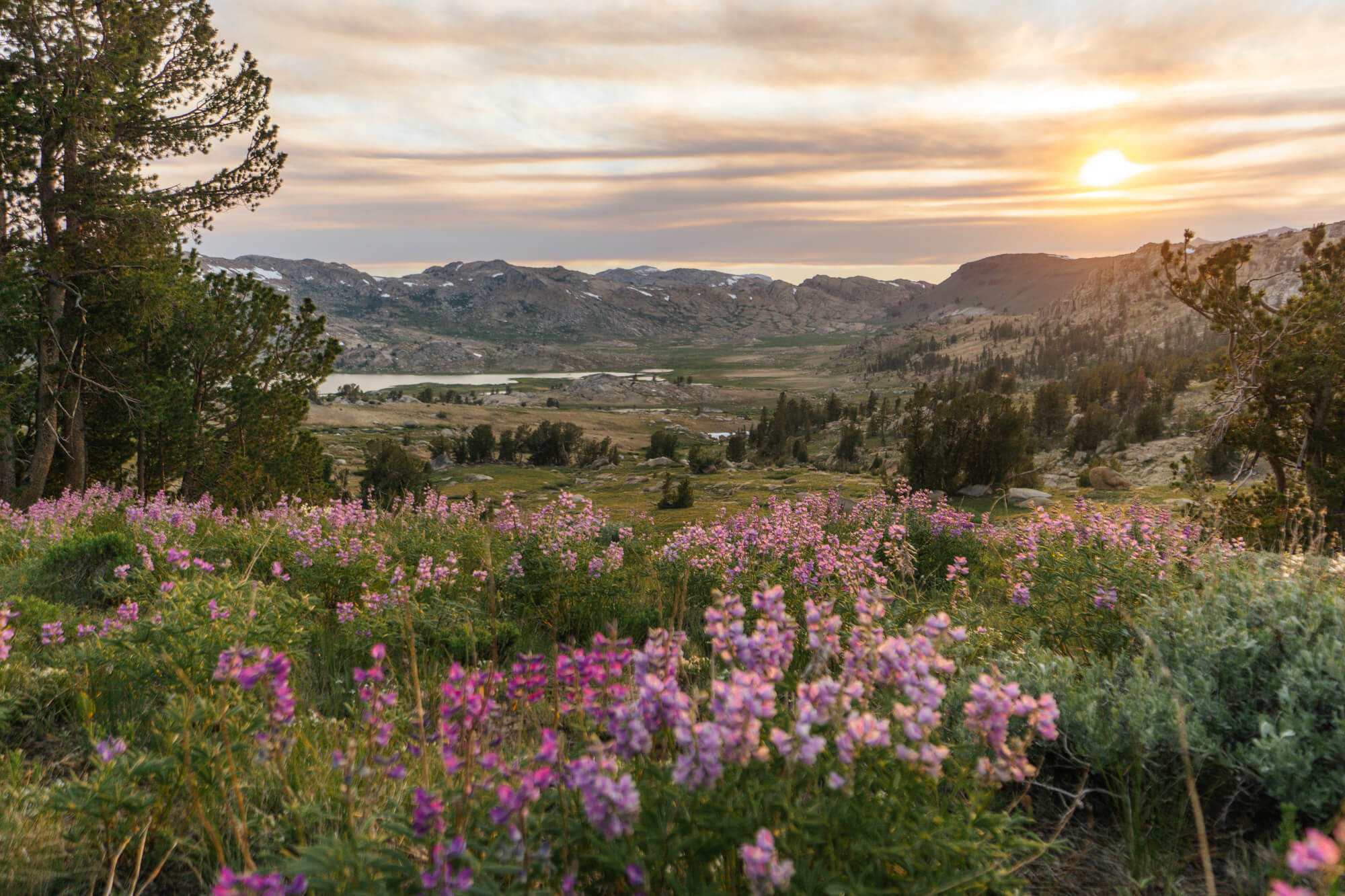
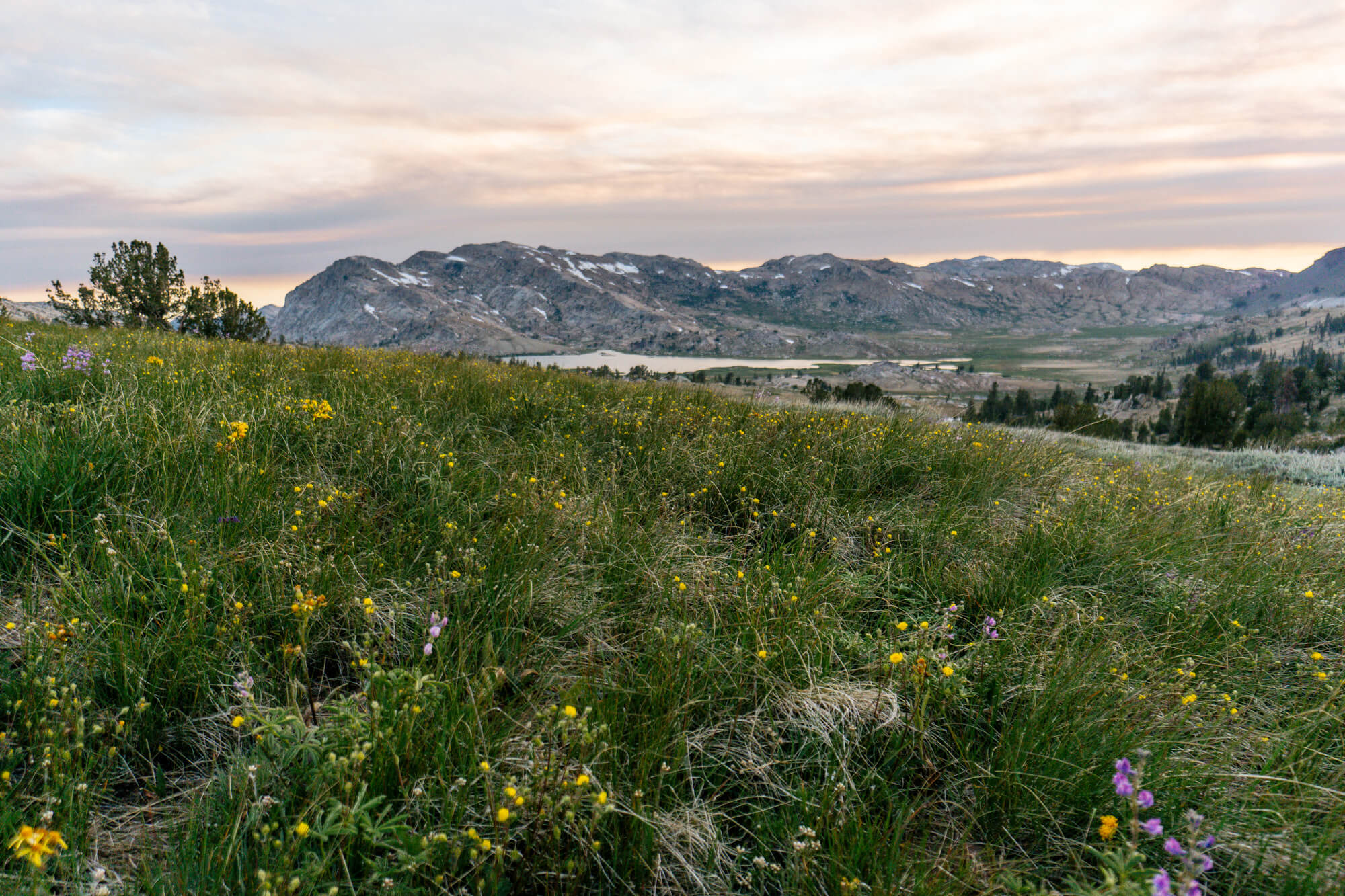
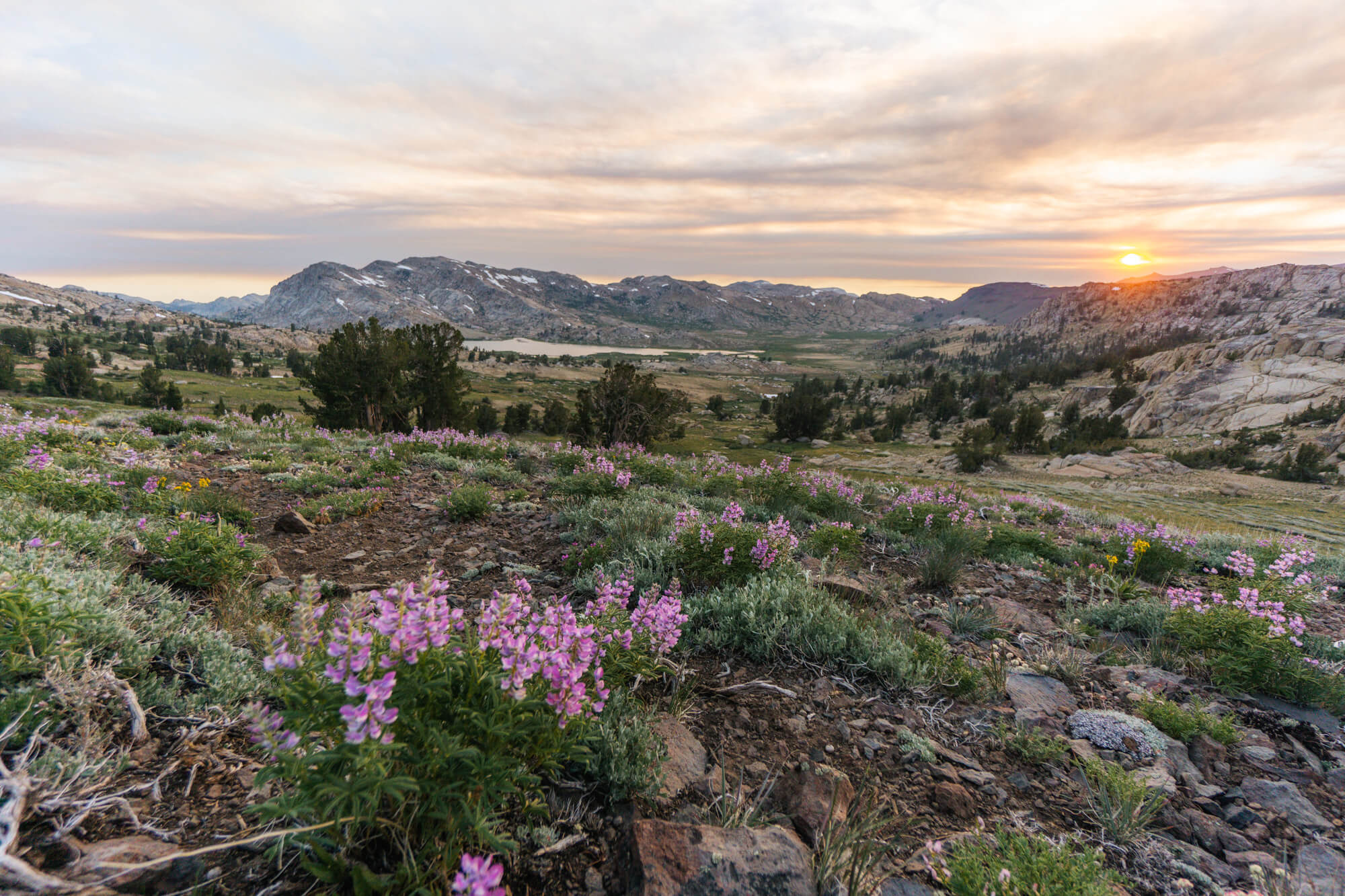
You’ll notice in the images above the smoke was just barely missing us due to wind direction. Well this was not the case in the morning; we woke to a fiery smoky sunrise that was actually quite cold and dark.

The 8 mile hike back to the car wasn’t very eventful other than the fact that we managed to cut an hour off our outbound time and Tyler glissaded down a snow patch.
We stopped in Bridgeport for lunch at the Burger Barn and I can confirm the burgers are solid and the portion sizes are mind-blowingly large, perfect for a trio of dirtbags that had just emerged from a 4 day journey in the Emigrant wilderness.
